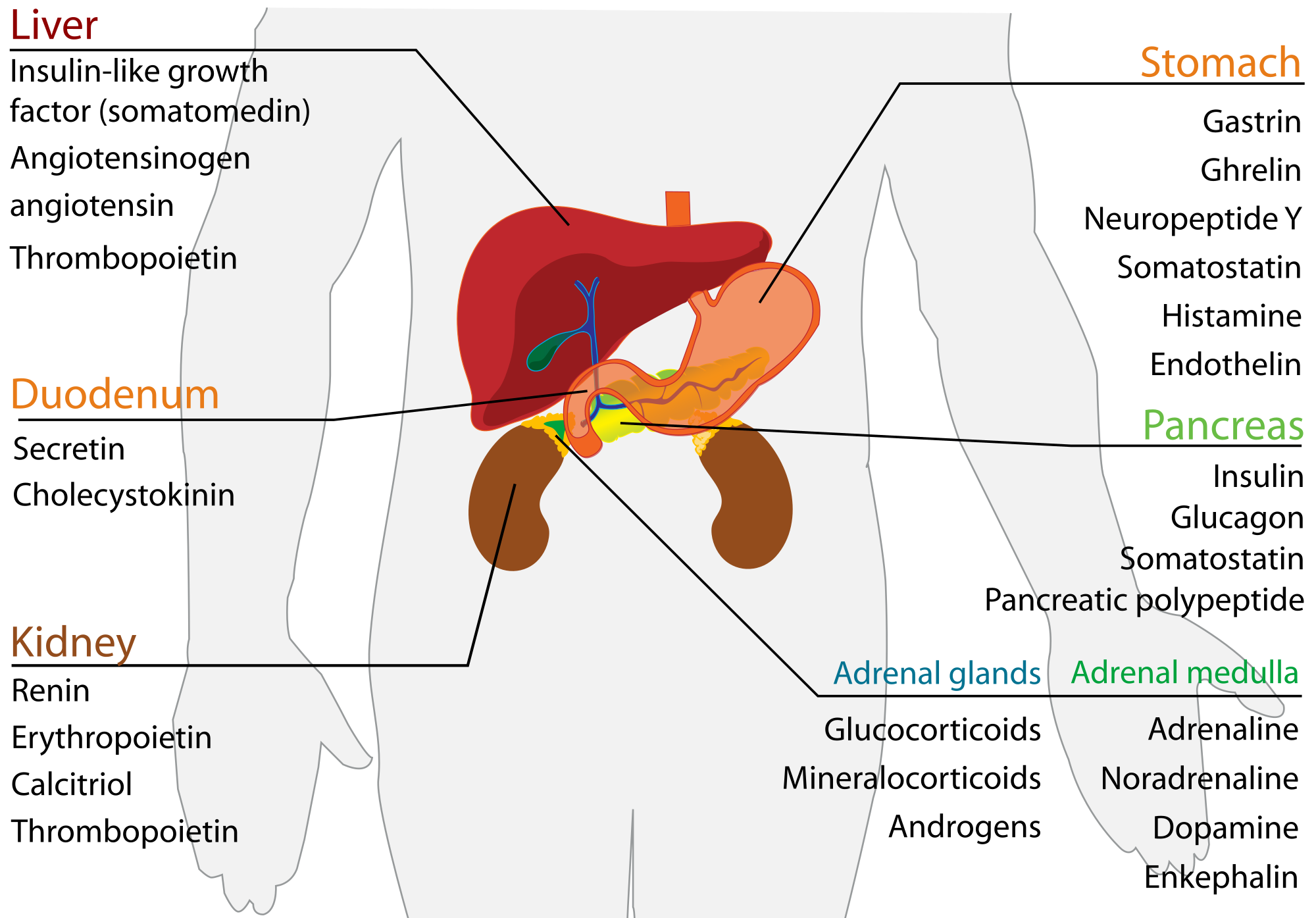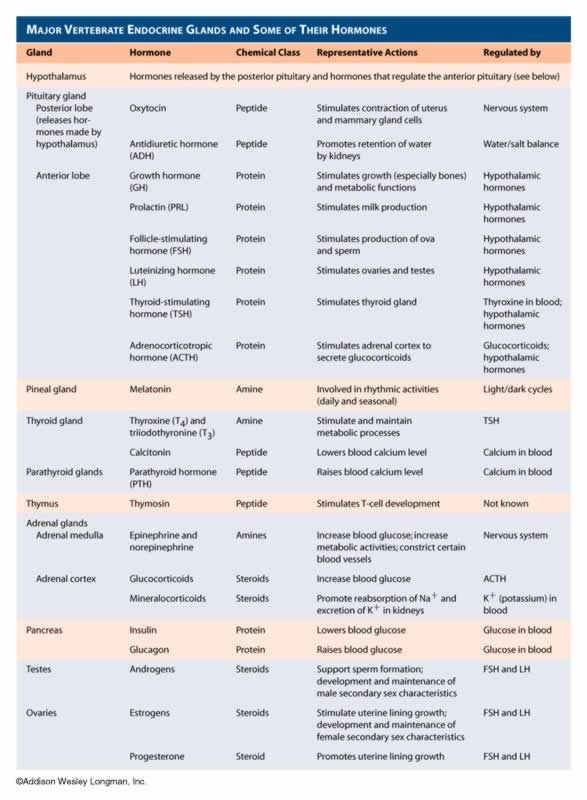Major organs and functions of the endocrine system. Endocrine System: Major Organs, Functions, and Hormonal Regulation
How does the endocrine system control bodily functions. What are the main glands and hormones in mammals. Why is the endocrine system crucial for life. How do hormones interact to maintain vital functions.
The Vital Role of the Endocrine System in Human Biology
The endocrine system plays a crucial role in maintaining the body’s homeostasis and regulating various physiological processes. This complex network of glands and hormones orchestrates numerous functions that are essential for life. But how exactly does this intricate system operate?
The endocrine system’s primary function is to produce and secrete hormones, chemical messengers that travel through the bloodstream to target specific cells and organs. These hormones control a wide range of bodily functions, including:
- Energy control
- Reproduction
- Immunity
- Behavior (e.g., fight or flight response)
- Growth and development
The importance of the endocrine system extends beyond basic physiological processes. It also plays a vital role in our ability to respond to diseases, reproduce, and even influences our relationships and behavior, such as the bonding between mother and child.

The Intricate Network of Endocrine Glands and Their Hormones
The endocrine system consists of several major glands, each responsible for producing and secreting specific hormones. Understanding these glands and their respective hormones is crucial for comprehending the system’s overall function. Which are the primary glands in the endocrine system?
Hypothalamus: The Master Control Center
The hypothalamus, a specialized region of the brain, acts as the control center for the endocrine system. It produces releasing or inhibiting hormones that regulate the function of other endocrine glands. Some of the key hormones produced by the hypothalamus include:
- Growth hormone-releasing hormone (GHRH)
- Somatostatin
- Corticotropin-releasing hormone (CRH)
- Arginine vasopressin (AVP)
- Gonadotropin-releasing hormone (GnRH)
- Thyrotropin-releasing hormone (TRH)
These hormones primarily target the anterior pituitary gland, controlling the production and release of other hormones throughout the body.

Pituitary Gland: The Master Gland
Often referred to as the “master gland,” the pituitary gland is divided into two main sections: the anterior pituitary (adenohypophysis) and the posterior pituitary (neurohypophysis). Each section produces and secretes different hormones with distinct functions.
The anterior pituitary produces several crucial hormones:
- Luteinizing hormone (LH): Controls the ovarian estrus cycle and stimulates Leydig cells in the testes
- Follicle-stimulating hormone (FSH): Regulates the ovarian estrus cycle and stimulates Sertoli cells in the testes
- Prolactin: Promotes milk production
- Thyroid-stimulating hormone (TSH): Stimulates the thyroid gland to produce thyroxine (T4)
- Growth hormone (GH): Affects growth and metabolism throughout the body
- Adrenocorticotropic hormone (ACTH): Stimulates the adrenal cortex
The posterior pituitary, on the other hand, releases two hormones that are actually produced in the hypothalamus:
- Antidiuretic hormone (ADH): Controls water loss by acting on the kidneys
- Oxytocin (OT): Acts on the uterus and mammary glands
Thyroid Gland: Regulating Metabolism and Development
The thyroid gland, located in the neck, produces thyroxine (T4), which is converted to its active form, triiodothyronine (T3), in the body. These hormones play a crucial role in regulating the body’s metabolic rate and are essential for proper development and reproductive functions.

How does the thyroid gland impact overall body function? Thyroid hormones affect nearly every tissue in the body, influencing:
- Basal metabolic rate
- Protein synthesis
- Bone growth
- Neural development
- Reproductive function
Adrenal Glands: Stress Response and Metabolic Regulation
The adrenal glands, situated atop the kidneys, consist of two distinct parts: the adrenal cortex and the adrenal medulla. Each part produces different hormones with unique functions.
The adrenal cortex secretes several types of hormones:
- Glucocorticoids (e.g., cortisol): Regulate metabolism and stress response
- Mineralocorticoids (e.g., aldosterone): Control electrolyte balance
- Androgens: Contribute to secondary sex characteristics
The adrenal medulla produces catecholamines, including epinephrine (adrenaline) and norepinephrine (noradrenaline), which are crucial for the body’s “fight or flight” response.
Pancreas: Balancing Blood Sugar Levels
While primarily known for its exocrine function in digestion, the pancreas also plays a vital role in the endocrine system. The pancreatic islets, or islets of Langerhans, contain specialized cells that produce and secrete important hormones:
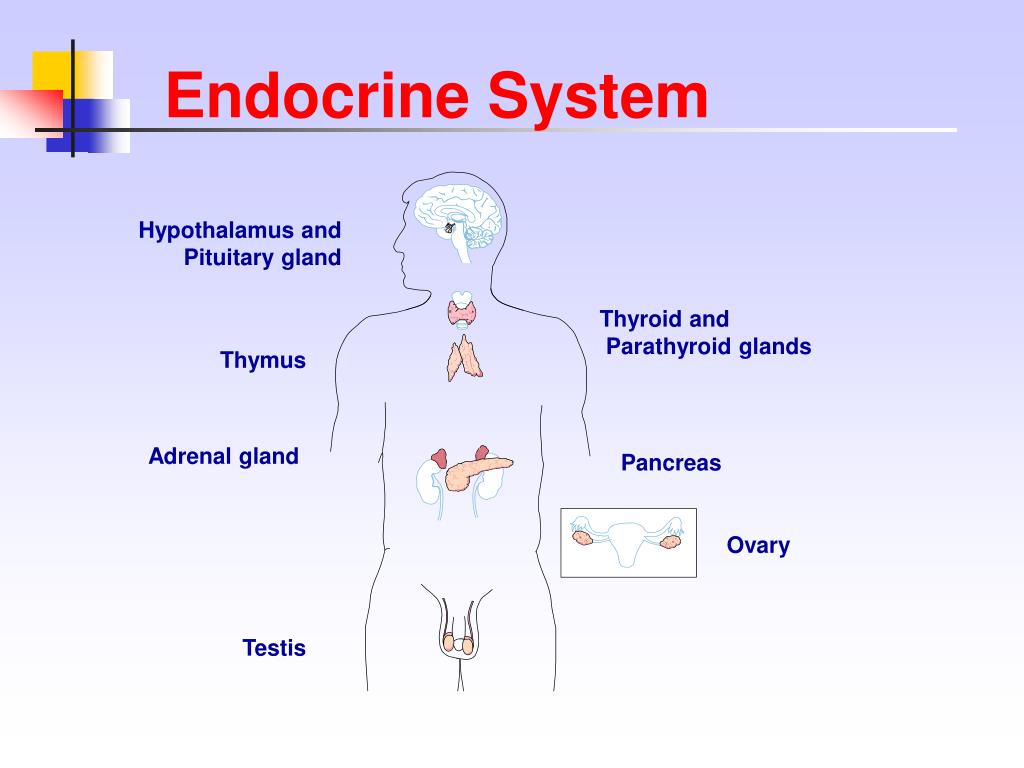
- Alpha cells: Produce glucagon, which raises blood glucose levels
- Beta cells: Produce insulin, which lowers blood glucose levels
- Delta cells: Produce somatostatin, which regulates the release of other pancreatic hormones
How do these pancreatic hormones work together to maintain blood sugar balance? Insulin and glucagon act in opposition to each other, with insulin promoting glucose uptake and storage, while glucagon promotes glucose release into the bloodstream. This delicate balance is crucial for maintaining stable blood sugar levels and providing energy to the body’s cells.
Gonads: Reproductive Hormone Production
The gonads – ovaries in females and testes in males – are responsible for producing sex hormones that regulate reproductive function and secondary sex characteristics.
Ovaries
The ovaries produce several hormones, including:
- Estrogen: Regulates the menstrual cycle and promotes the development of female secondary sex characteristics
- Progesterone: Prepares the uterus for pregnancy and maintains pregnancy
- Inhibin: Helps regulate the production of follicle-stimulating hormone (FSH)
Testes
The testes produce:
- Testosterone: Promotes the development of male secondary sex characteristics and sperm production
- Inhibin: Helps regulate the production of follicle-stimulating hormone (FSH)
The Intricate Web of Hormonal Interactions
The endocrine system’s function is not limited to individual glands and hormones working in isolation. Instead, it operates as a complex network of interactions and feedback loops. How do these hormonal interactions contribute to maintaining bodily functions?

Many hormones act on multiple tissues and organs throughout the body. The target cells in these tissues contain specialized structures called receptors, to which only specific hormones can bind. The response that occurs in the cell depends on several factors:
- The type of receptor
- The cell type
- The effects of other hormones to which the cell may also be exposed
Interestingly, a hormone that stimulates the activity of one cell type may suppress that of a different cell type. This complex interplay allows for fine-tuned regulation of bodily functions and adaptive responses to various internal and external stimuli.
Evolutionary Perspectives on the Endocrine System
The endocrine system is not unique to humans but is found in nearly all vertebrates, including other mammals, fish, amphibians, reptiles, and birds. While the basic structure and function of the endocrine system are similar across these groups, there are notable differences in the precise structures and roles of various organs and hormones.
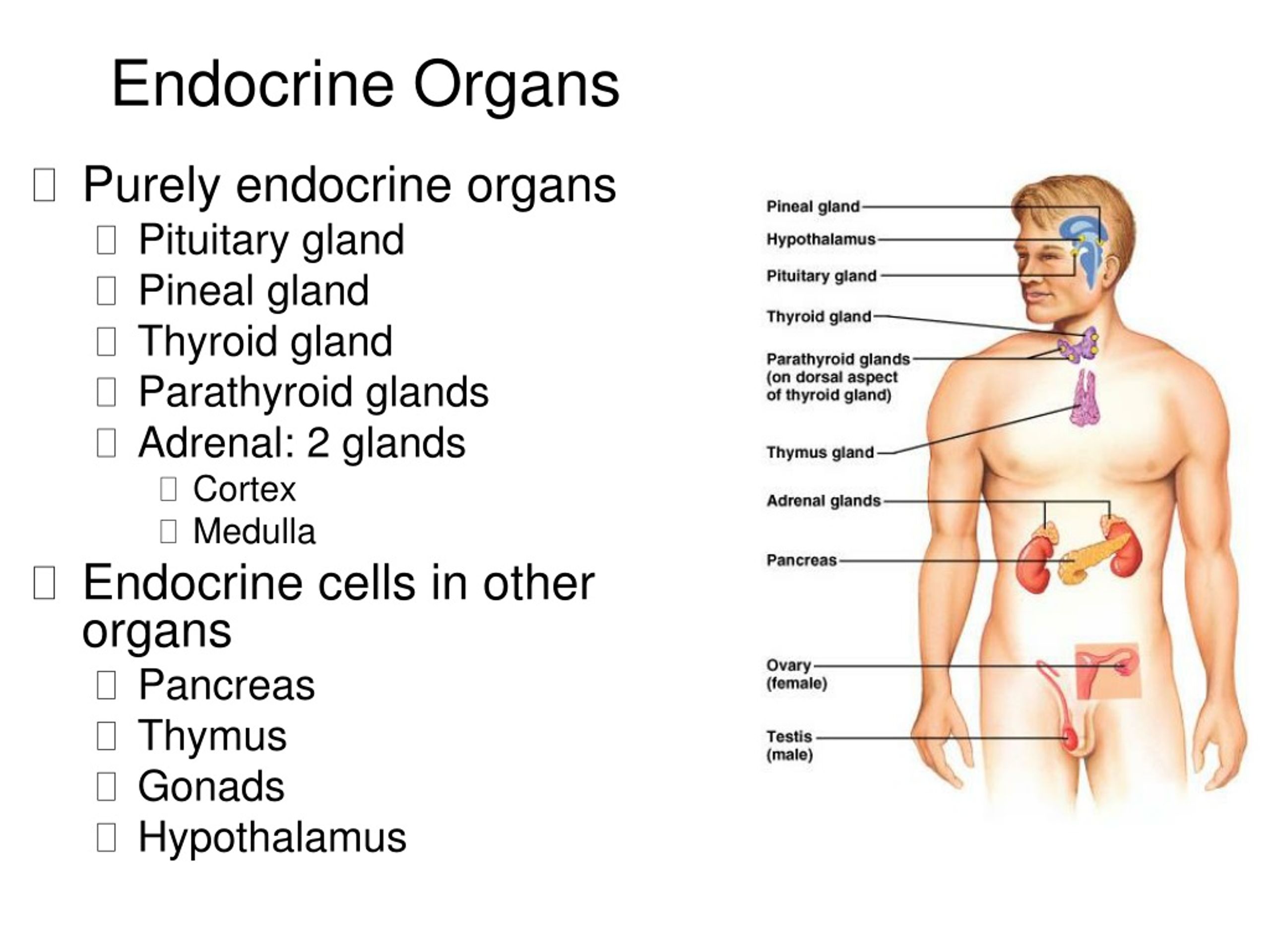
These differences are particularly evident in relation to the diverse life cycles and developmental stages of different species. For example, the hormones involved in metamorphosis in amphibians or molting in arthropods represent specialized adaptations of the endocrine system to meet the unique needs of these organisms.
Even invertebrates such as mollusks, crustaceans, and insects possess endocrine systems that control a similar range of body functions. However, these systems have evolved along markedly different lines compared to those of vertebrates, showcasing the diverse evolutionary solutions to similar physiological challenges.
The Endocrine System’s Role in Health and Disease
Understanding the intricate workings of the endocrine system is crucial for comprehending various health conditions and developing effective treatments. How does the endocrine system contribute to overall health, and what happens when it malfunctions?
Endocrine disorders can arise from various causes, including:
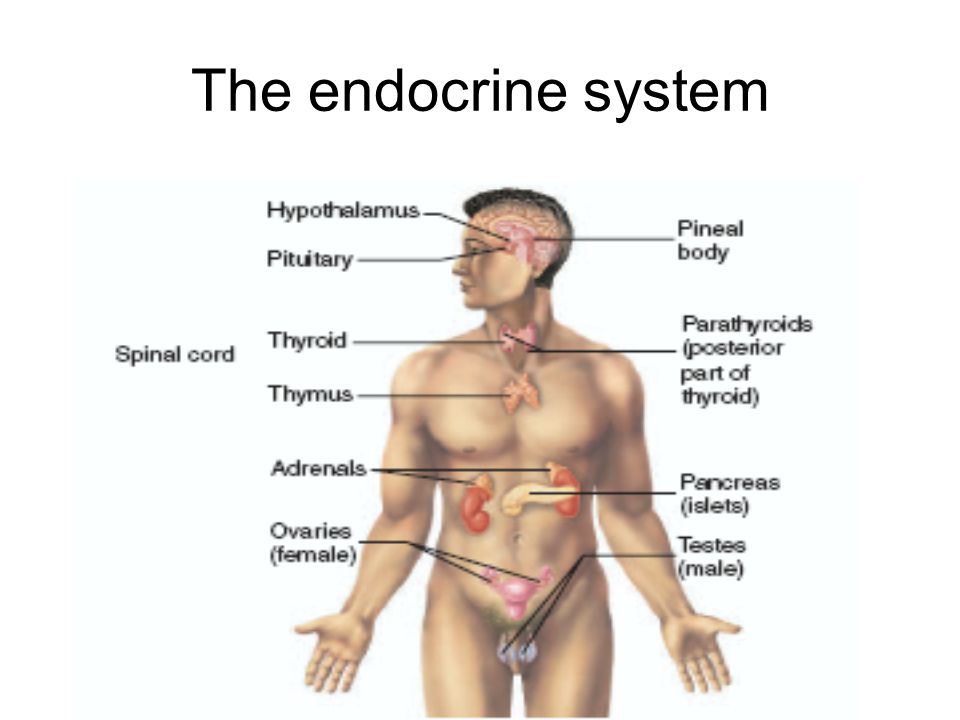
- Overproduction or underproduction of hormones
- Impaired hormone receptor function
- Disruption of feedback mechanisms
- Tumors in endocrine glands
Some common endocrine disorders include:
- Diabetes mellitus: Impaired insulin production or function
- Thyroid disorders: Hyperthyroidism (overactive thyroid) or hypothyroidism (underactive thyroid)
- Addison’s disease: Insufficient production of adrenal hormones
- Cushing’s syndrome: Excessive production of cortisol
- Growth hormone disorders: Gigantism or dwarfism
Research into the endocrine system continues to reveal new insights into its function and its role in health and disease. Recent advances in areas such as neuroendocrinology, which explores the interaction between the nervous system and the endocrine system, are opening up new avenues for understanding and treating various disorders.
The endocrine system’s influence extends beyond traditional physiological processes. Emerging research suggests that endocrine function may play a role in cognitive processes, mood regulation, and even social behavior. This expanding understanding of the endocrine system’s reach underscores its fundamental importance in nearly every aspect of human biology and health.
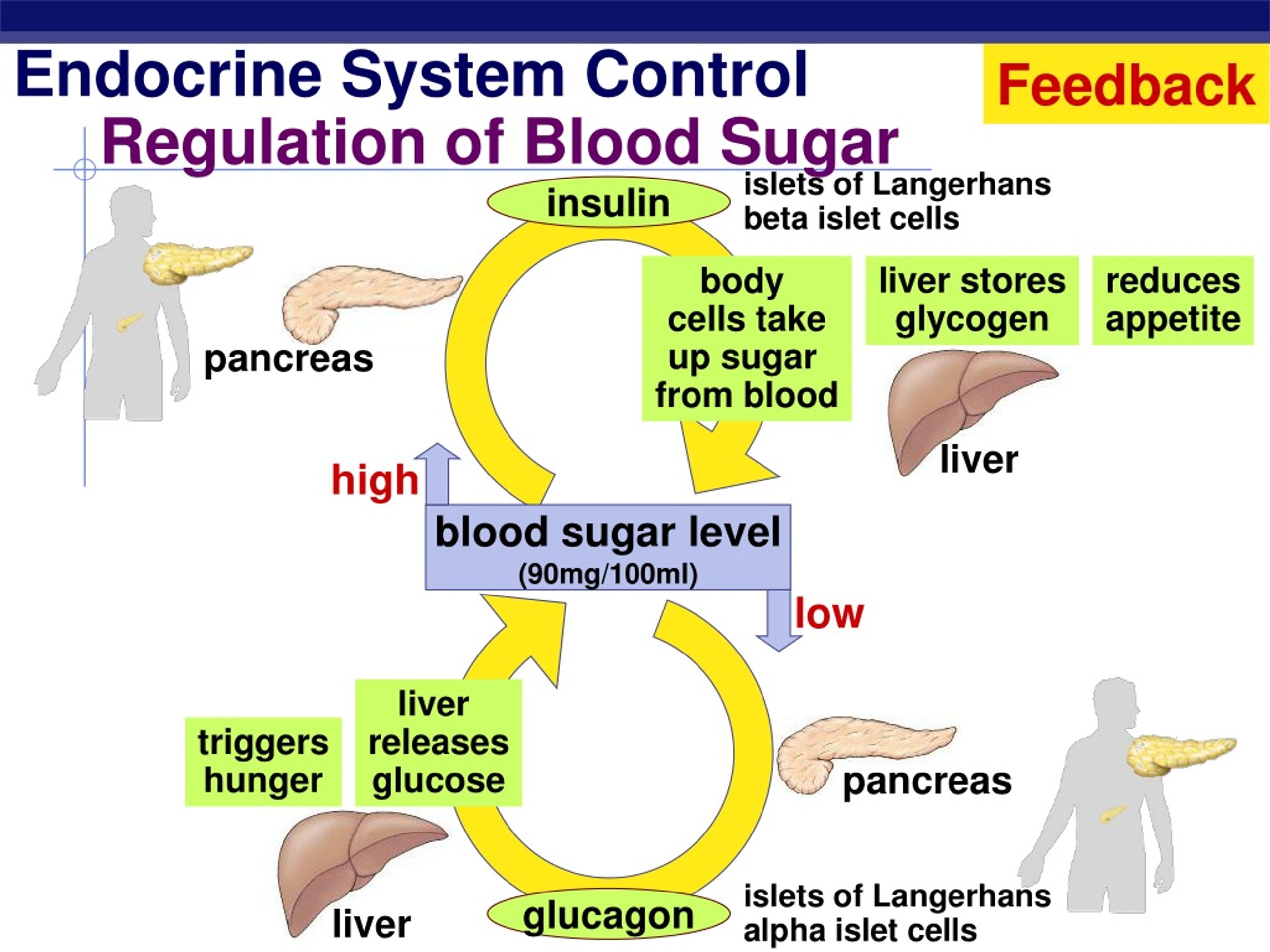
As our knowledge of the endocrine system grows, so too does our ability to develop targeted therapies for endocrine disorders. From hormone replacement therapies to novel drug treatments that modulate hormone receptor function, advances in endocrinology continue to improve the lives of millions of people worldwide.
The study of the endocrine system also has important implications for environmental health. Certain environmental pollutants, known as endocrine disruptors, can interfere with hormone function and potentially lead to adverse health effects. Understanding how these substances interact with the endocrine system is crucial for developing appropriate regulations and protective measures.
In conclusion, the endocrine system represents a fascinating and complex aspect of human biology. Its intricate network of glands, hormones, and feedback mechanisms plays a vital role in maintaining homeostasis, regulating growth and development, and influencing behavior and reproduction. As research in this field continues to advance, our appreciation for the endocrine system’s fundamental importance in health and disease only grows deeper.

Endocrine system role – Chemicals – Environment
Additional tools
Why is it important
for life?
The endocrine system controls growth and development during
childhood, regulation of bodily functions in adulthood, and
the reproductive process.
The endocrine system is important for the control and regulation
of all the major functions and processes of the body:
- Energy control
- Reproduction
- Immunity
- Behaviour (e.g. fight or flight response)
- Growth and development
Hormones interact to maintain the above functions and help
to regulate our responses to disease, our ability to reproduce
and even influence our relationships and behaviour (such as
mother:child bonding).
As can be seen, many of the hormones act on tissues and organs
at several sites throughout the body. The target cells in these
tissues or organs contain specialised structures (receptors)
to which only a specific hormone can bind. The response that
occurs in the cell will depend on the receptor and cell type,
and the effects of other hormones to which that cell may also
be exposed. Also, a hormone that stimulates the activity of
one cell type may suppress that of a different cell type.
A similar, but not identical, endocrine system to that of humans
is found in nearly all vertebrates including other mammals,
fish, amphibians, reptiles and birds, although the precise structures
and roles of the various organs and hormones differ between
different groups, particularly in relation to the different
life cycle and development stages in different species. Invertebrates
Invertebrates
such as molluscs, crustacea and insects also have endocrine
systems that control a similar range of body functions although
these have evolved along markedly different lines to those of
vertebrates.
The main glands and hormones of mammals are:
| Gland | Hormones | Target organs | Main actions |
|---|---|---|---|
| Hypothalamus (specialised region of the brain) | Releasing or inhibiting hormones (e.g. growth hormone releasing hormone (GHRH), somatostatin, corticotropin releasing hormone (CRH), arginine vasopressin (AVP), gonadotropin releasing hormone (GnRH) & thyrotropin releasing hormone (TRH) | Anterior pituitary | Controls production/release of other hormones |
| Antidiuretic hormone (ADH) | Kidney | Controls water loss | |
| Oxytocin (OT) -released via the posterior pituitary (neurohypothysis) | Uterus, Mammary glands | ||
| Anterior pituitary [adenohypophysis] | Luteinizing hormone (LH) | Gonads | Control of ovarian oestrus cycle & Leydig cells in testis Control of ovarian oestrus cycle & Sertoli cells in testis Promotes milk production |
| Follicle stimulating hormone (FSH) | Gonads | ||
| Prolactin | Breast | ||
| Thyroid stimulating hormone (TSH) | Thyroid glands | Stimulates T4 production/release Affects growth and metabolism | |
| Growth hormone (GH) | Generalised | ||
| Adrenocorticotropic hormone (ACTH) | Adrenal glands | Stimulates adrenal cortex | |
| Thyroid | Thyroxine (T4) [active form is tri-iodothyronine T3] | Many tissues | Control of general metabolic rate, also important for development and reproductive functions |
| Adrenal [suprarenal] cortex | Glucocorticoids (e. g. cortisol & corticosterone g. cortisol & corticosterone | Many tissues | Diverse effects on inflammation and protein synthesis |
| Mineralocorticoids (e.g. aldosterone) | Many tissues | Salt balance | |
| Adrenal [suprarenal] medulla | Adrenaline (Epinephrine) | Many tissues | Glycogenolysis, lipid mobilisation, smooth muscle contraction, cardiac function |
| Noradrenaline (Norepinephrine) | Many tissues | Lipid mobilisation, arteriole contraction | |
| Pancreas | Insulin | Many tissues including liver, adipose tissue & muscle | Facilitates utilisation of glucose by cells & prevents excessive glycogen breakdown in liver & muscle |
| Glucagon | Many tissues including liver, adipose tissue & muscle | Prevents hypoglycaemia through action on carbohydrate, fat & protein metabolism | |
| Gonads | Sex steroids (e. g. oestradiol, testosterone, g. oestradiol, testosterone,progesterone) | Brain, gonads, accessory sex organs | Sexual development & maintainance of reproductive function and behaviour |
15: Endocrine System – Medicine LibreTexts
- Last updated
- Save as PDF
No headers
In order to survive, animals must constantly adapt to changes in the environment. The nervous and endocrine systems both work together to bring about this adaptation. In general the nervous system responds rapidly to short-term changes by sending electrical impulses along nerves and the endocrine system brings about longer-term adaptations by sending out chemical messengers called hormones into the bloodstream. (Thumbnail image credit: “The Endocrine System” by OpenStax College is licensed under CC BY 3.0)
(Thumbnail image credit: “The Endocrine System” by OpenStax College is licensed under CC BY 3.0)
- 15.1: Introduction to the Endocrine System
- The endocrine system is comprised of a set of organs that secrete a variety of hormones to regulate body function and help the body maintain homeostasis. Hormones convey their messages to target tissues by travelling through the bloodstream.
- 15.2: An Overview of the Endocrine System
- Communication is a process in which a sender transmits signals to one or more receivers to control and coordinate actions. In the human body, two major organ systems participate in relatively “long distance” communication: the nervous system and the endocrine system. Together, these two systems are primarily responsible for maintaining homeostasis in the body.
- 15.3: Pituitary Gland and Hypothalamus
- The hypothalamus–pituitary complex can be thought of as the “command center” of the endocrine system.
 This complex secretes several hormones that directly produce responses in target tissues, as well as hormones that regulate the synthesis and secretion of hormones of other glands. In addition, the hypothalamus–pituitary complex coordinates the messages of the endocrine and nervous systems.
This complex secretes several hormones that directly produce responses in target tissues, as well as hormones that regulate the synthesis and secretion of hormones of other glands. In addition, the hypothalamus–pituitary complex coordinates the messages of the endocrine and nervous systems.
- 15.4: Thyroid Gland
- A butterfly-shaped organ, the thyroid gland is located anterior to the trachea, just inferior to the larynx. The medial region, called the isthmus, is flanked by wing-shaped left and right lobes. Each of the thyroid lobes are embedded with parathyroid glands, primarily on their posterior surfaces. The tissue of the thyroid gland is composed mostly of thyroid follicles. The follicles are made up of a central cavity filled with a sticky fluid called colloid.
- 15.5: Parathyroid Glands
- The parathyroid glands are tiny, round structures usually found embedded in the posterior surface of the thyroid gland.
 Most people have four parathyroid glands. The primary functional cells of the parathyroid glands are the chief cells that release parathyroid hormone to help maintain calcium homeostasis.
Most people have four parathyroid glands. The primary functional cells of the parathyroid glands are the chief cells that release parathyroid hormone to help maintain calcium homeostasis.
- 15.6: Adrenal Glands
- The adrenal glands, located on the superior surface of the kidneys, release the hormones aldosterone, which regulates blood sodium concentrations, glucocorticoid hormones such as cortisol that regulate blood glucose levels and long-term stress responses, and epinephrine and norepinephrine that stimulate the fight-or-flight stress response.
- 15.7: Pineal Gland
- Recall that the hypothalamus, part of the diencephalon of the brain, sits inferior and somewhat anterior to the thalamus. Inferior but somewhat posterior to the thalamus is the pineal gland, a tiny endocrine gland whose functions are not entirely clear. The pinealocyte cells that make up the pineal gland are known to produce and secrete the amine hormone melatonin, which is derived from serotonin.

- 15.8: Gonadal and Placental Hormones
- This section briefly discusses the hormonal role of the gonads—the testes and ovaries—which produce the sex cells (sperm and ova, respectively) and secrete the gonadal hormones. The roles of the gonadotropins released from the anterior pituitary (FSH and LH) were discussed earlier.
- 15.9: Endocrine Pancreas
- The pancreas is a long, slender organ, most of which is located posterior to the bottom half of the stomach. Although it is primarily an exocrine gland, secreting a variety of digestive enzymes, the pancreas has an endocrine function. Its pancreatic islets—clusters of cells formerly known as the islets of Langerhans—secrete the hormones glucagon, insulin, somatostatin, and pancreatic polypeptide.
- 15.10: Organs with Secondary Endocrine Functions
- In your study of anatomy, you have already encountered a few of the many organs of the body that have secondary endocrine functions.
 Here, you will learn about the hormone-producing activities of the heart, gastrointestinal tract, kidneys, skeleton, adipose tissue, skin, and thymus.
Here, you will learn about the hormone-producing activities of the heart, gastrointestinal tract, kidneys, skeleton, adipose tissue, skin, and thymus.
- 15.11: Development and Aging of the Endocrine System
- The endocrine system originates from all three germ layers of the embryo, including the endoderm, ectoderm, and mesoderm. In general, different hormone classes arise from distinct germ layers. Aging affects the endocrine glands, potentially affecting hormone production and secretion, and can cause disease. The production of hormones, such as human growth hormone, cortisol, aldosterone, sex hormones, and the thyroid hormones, decreases with age.
The Pancreas and Its Functions
Location of the Pancreas | Functions of the Pancreas | Diseases of the Pancreas | Next Steps
The pancreas is an organ located in the abdomen. It plays an essential role in converting the food we eat into fuel for the body’s cells.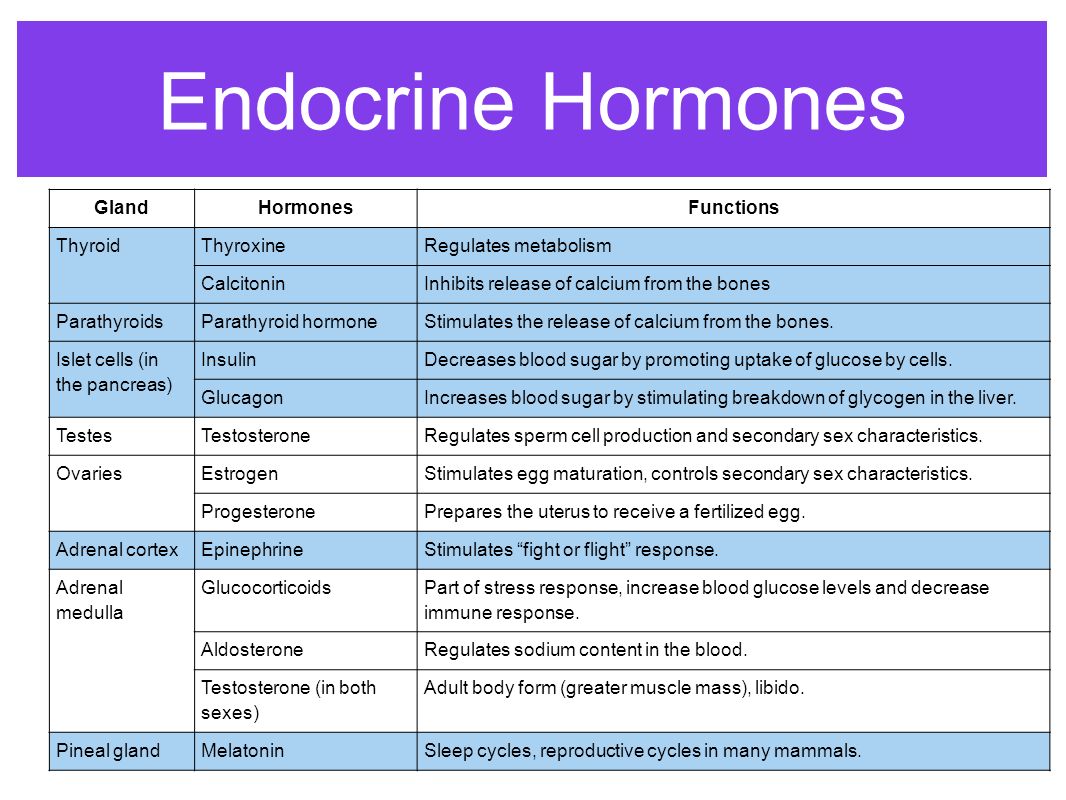 The pancreas has two main functions: an exocrine function that helps in digestion and an endocrine function that regulates blood sugar.
The pancreas has two main functions: an exocrine function that helps in digestion and an endocrine function that regulates blood sugar.
Location of the Pancreas
The pancreas is located behind the stomach in the upper left abdomen. It is surrounded by other organs including the small intestine, liver, and spleen. It is spongy, about six to ten inches long, and is shaped like a flat pear or a fish extended horizontally across the abdomen.
The wide part, called the head of the pancreas, is positioned toward the center of the abdomen. The head of the pancreas is located at the juncture where the stomach meets the first part of the small intestine. This is where the stomach empties partially digested food into the intestine, and the pancreas releases digestive enzymes into these contents.
The central section of the pancreas is called the neck or body.
The thin end is called the tail and extends to the left side.
Several major blood vessels surround the pancreas, the superior mesenteric artery, the superior mesenteric vein, the portal vein and the celiac axis, supplying blood to the pancreas and other abdominal organs.
Almost all of the pancreas (95%) consists of exocrine tissue that produces pancreatic enzymes for digestion. The remaining tissue consists of endocrine cells called islets of Langerhans. These clusters of cells look like grapes and produce hormones that regulate blood sugar and regulate pancreatic secretions.
Functions of the Pancreas
A healthy pancreas produces the correct chemicals in the proper quantities, at the right times, to digest the foods we eat.
Exocrine Function:
The pancreas contains exocrine glands that produce enzymes important to digestion. These enzymes include trypsin and chymotrypsin to digest proteins; amylase for the digestion of carbohydrates; and lipase to break down fats. When food enters the stomach, these pancreatic juices are released into a system of ducts that culminate in the main pancreatic duct. The pancreatic duct joins the common bile duct to form the ampulla of Vater which is located at the first portion of the small intestine, called the duodenum. The common bile duct originates in the liver and the gallbladder and produces another important digestive juice called bile. The pancreatic juices and bile that are released into the duodenum, help the body to digest fats, carbohydrates, and proteins.
The common bile duct originates in the liver and the gallbladder and produces another important digestive juice called bile. The pancreatic juices and bile that are released into the duodenum, help the body to digest fats, carbohydrates, and proteins.
Endocrine Function:
The endocrine component of the pancreas consists of islet cells (islets of Langerhans) that create and release important hormones directly into the bloodstream. Two of the main pancreatic hormones are insulin, which acts to lower blood sugar, and glucagon, which acts to raise blood sugar. Maintaining proper blood sugar levels is crucial to the functioning of key organs including the brain, liver, and kidneys.
Diseases of the Pancreas
Disorders affecting the pancreas include pancreatitis, precancerous conditions such as PanIN and IPMN, and pancreatic cancer. Each disorder may exhibit different symptoms and requires different treatments.
Pancreatitis
Pancreatitis is inflammation of the pancreas that occurs when pancreatic enzyme secretions build up and begin to digest the organ itself. It can occur as acute painful attacks lasting a matter of days, or it may be a chronic condition that progresses over a period of years.
Learn more about pancreatitis, its causes, and treatment options.
Precursors to Pancreatic Cancer
The exact cause of pancreatic cancer is still unknown, but there are known risk factors that increase the risk of developing the disease. Cigarette smoking, a family history of pancreatic cancer or hereditary cancer syndromes, and chronic pancreatitis are some of these factors. In addition, certain pancreatic lesions such as Intraductal Papillary Mucinous Neoplasms (IPMNs) and Pancreatic Intraepithelial Neoplasia (PanIN) are considered precursors to pancreatic cancer.
Read more about the precursors to pancreatic cancer.
Pancreatic Cancer
The most common form of pancreatic cancer is pancreatic adenocarcinoma, an exocrine tumor arising from the cells lining the pancreatic duct.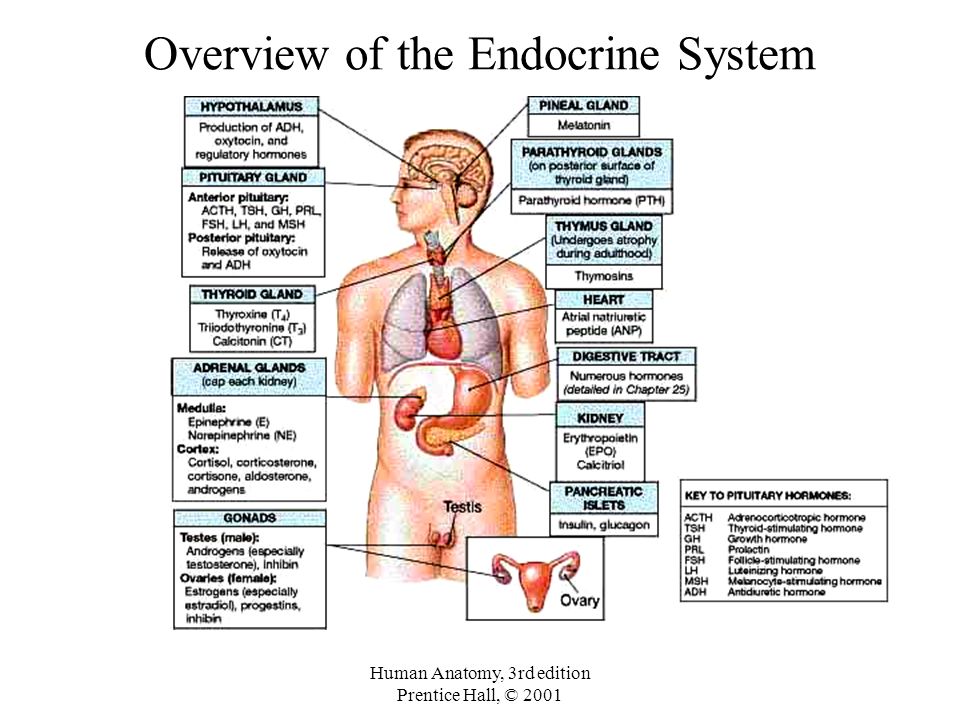 A far less common form, endocrine tumors, account for less than 5% of all pancreatic tumors and are sometimes referred to as neuroendocrine or islet cell tumors.
A far less common form, endocrine tumors, account for less than 5% of all pancreatic tumors and are sometimes referred to as neuroendocrine or islet cell tumors.
Learn more about different forms of pancreatic cancer and their treatments.
Next Steps
If you or someone you care for is dealing with a pancreatic condition, the Pancreas Center is here for you. Whether you need a diagnosis, treatment, or a second opinion, we have an entire team of experts ready to help.
Call us at (212) 305-9467 or use our online form to get in touch today.
Related Services
Related Topics
7.7 Interactions of Organ Systems – Human Biology
Created by CK-12 Foundation
Figure 7.7.1 Everyone on a baseball team has a special job.
Every player on a baseball team has a special job. In the Figure 7.7.1 collage, each player has their part of the infield or outfield covered in case the ball comes their way. Other players on the team cover different parts of the field, or they pitch or catch the ball. Playing baseball clearly requires teamwork. In that regard, the human body is like a baseball team. All of the organ systems of the human body must work together as a team to keep the body alive and well. Teamwork within the body begins with communication.
Playing baseball clearly requires teamwork. In that regard, the human body is like a baseball team. All of the organ systems of the human body must work together as a team to keep the body alive and well. Teamwork within the body begins with communication.
Communication among organ systems is vital if they are to work together as a team. They must be able to respond to each other and change their responses as needed to keep the body in balance. Communication among organ systems is controlled mainly by the autonomic nervous system and the endocrine system.
The autonomic nervous system is the part of the nervous system that controls involuntary functions. The autonomic nervous system, for example, controls heart rate, blood flow, and digestion. You don’t have to tell your heart to beat faster or to consciously squeeze muscles to push food through the digestive system. You don’t have to even think about these functions at all! The autonomic nervous system orchestrates all the signals needed to control them.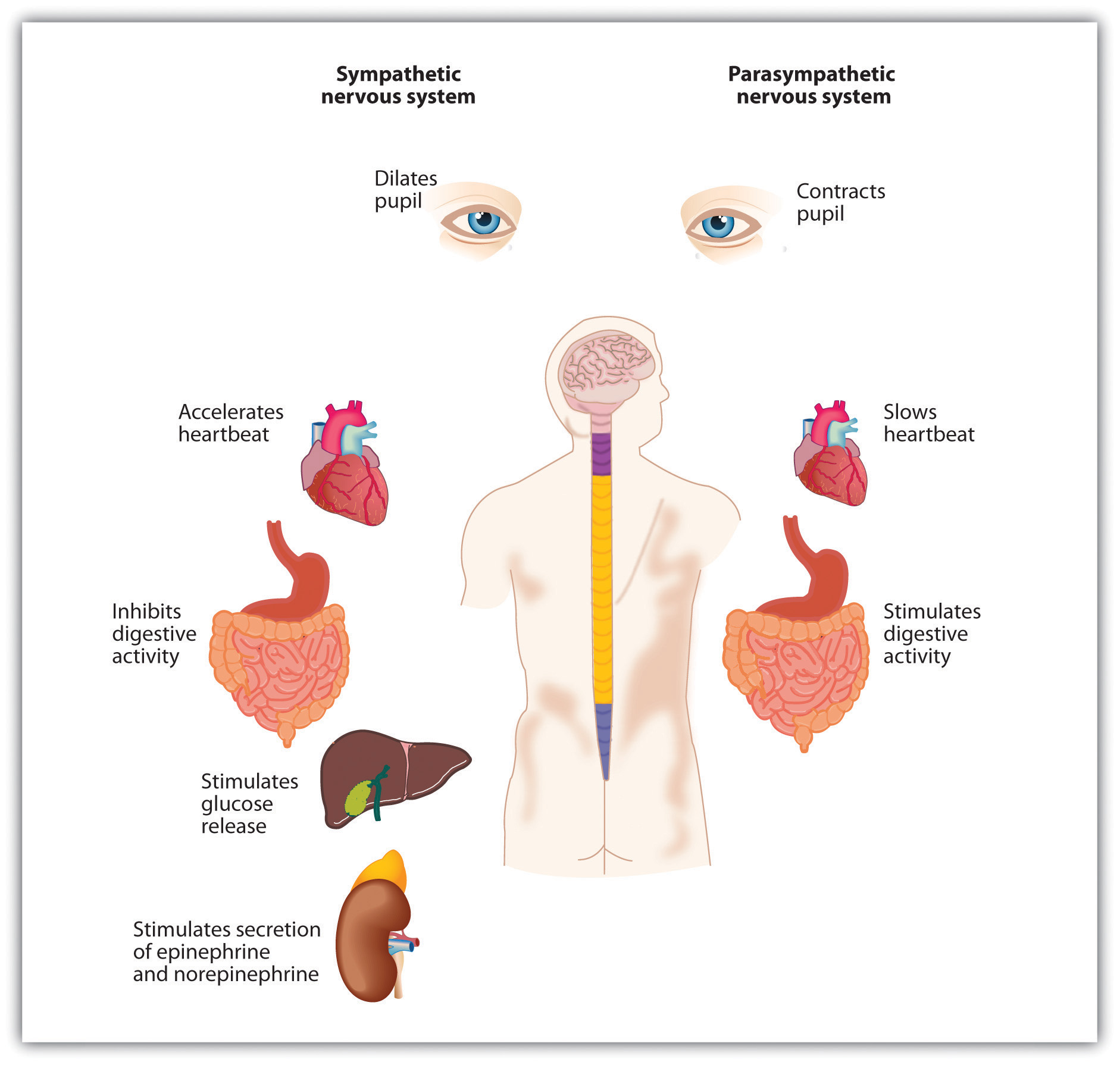 It sends messages between parts of the nervous system, as well as between the nervous system and other organ systems via chemical messengers called neurotransmitters.
It sends messages between parts of the nervous system, as well as between the nervous system and other organ systems via chemical messengers called neurotransmitters.
The endocrine system is the system of glands that secrete hormones directly into the bloodstream. Once in the blood, endocrine hormones circulate to cells everywhere in the body. The endocrine system itself is under control of the nervous system via a part of the brain called the hypothalamus. The hypothalamus secretes hormones that travel directly to cells of the pituitary gland, which is located beneath it. The pituitary gland is the master gland of the endocrine system. Most of its hormones either turn on or turn off other endocrine glands. For example, if the pituitary gland secretes thyroid-stimulating hormone, the hormone travels through the circulation to the thyroid gland, which is stimulated to secrete thyroid hormone. Thyroid hormone then travels to cells throughout the body, where it increases their metabolism.
An increase in cellular metabolism requires more cellular respiration. Cellular respiration is a good example of organ system interactions, because it is a basic life process that occurs in all living cells.
Cellular Respiration
Cellular respiration is the intracellular process that breaks down glucose with oxygen to produce carbon dioxide and energy in the form of ATP molecules. It is the process by which cells obtain usable energy to power other cellular processes. Which organ systems are involved in cellular respiration? The glucose needed for cellular respiration comes from the digestive system via the cardiovascular system. The oxygen needed for cellular respiration comes from the respiratory system also via the cardiovascular system. The carbon dioxide produced in cellular respiration leaves the body by the opposite route. In short, cellular respiration requires — at a minimum — the digestive, cardiovascular, and respiratory systems.
Fight-or-Flight Response
The well-known fight-or-flight response is a good example of how the nervous and endocrine systems control other organ system responses. The fight-or-flight response begins when the nervous system perceives sudden danger, as shown in the Figure 7.7.2 diagram. The brain sends a message to the endocrine system (via the pituitary gland) for the adrenal glands to secrete the hormones cortisol and adrenaline. These hormones flood the circulation and affect other organ systems throughout the body, including the cardiovascular, urinary, sensory, and digestive systems. Specific responses include increased heart rate, bladder relaxation, tunnel vision, and a shunting of blood away from the digestive system and toward the muscles, brain, and other vital organs needed to fight or flee.
The fight-or-flight response begins when the nervous system perceives sudden danger, as shown in the Figure 7.7.2 diagram. The brain sends a message to the endocrine system (via the pituitary gland) for the adrenal glands to secrete the hormones cortisol and adrenaline. These hormones flood the circulation and affect other organ systems throughout the body, including the cardiovascular, urinary, sensory, and digestive systems. Specific responses include increased heart rate, bladder relaxation, tunnel vision, and a shunting of blood away from the digestive system and toward the muscles, brain, and other vital organs needed to fight or flee.
Figure 7.7.2 How the fight-or-flight response occurs.
The people playing baseball in the opening collage (Figure 7.7.1) are using multiple organ systems in this voluntary activity. Their nervous systems are focused on observing and preparing to respond to the next play. Their other systems are being controlled by the autonomic nervous system.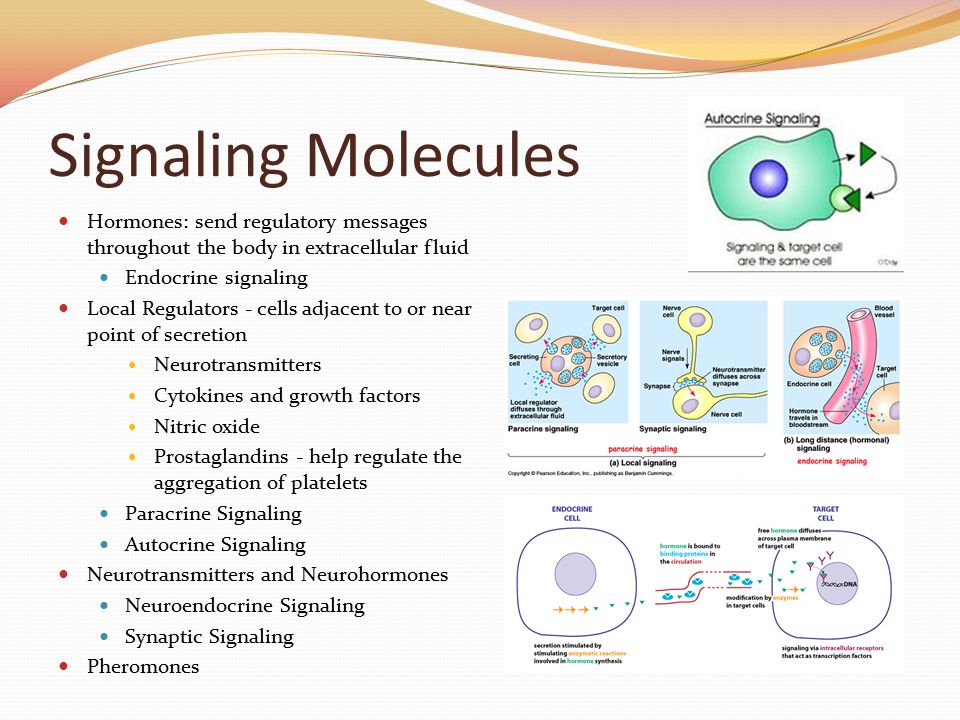 The players are using the muscular, skeletal, respiratory, and cardiovascular systems. Can you explain how each of these organ systems is involved in playing baseball?
The players are using the muscular, skeletal, respiratory, and cardiovascular systems. Can you explain how each of these organ systems is involved in playing baseball?
Teamwork among organ systems allows the human organism to work like a finely tuned machine — at least, it does until one of the organ systems fails. When that happens, other organ systems interacting in the same overall process will also be affected. This is especially likely if the affected system plays a controlling role in the process. An example is type 1 diabetes. This disorder occurs when the pancreas does not secrete the endocrine hormone insulin. Insulin normally is secreted in response to an increasing level of glucose in the blood, and it brings the level of glucose back to normal by stimulating body cells to take up insulin from the blood.
Learn more about type 1 diabetes. Use several reliable Internet sources to answer the following questions:
- In type 1 diabetes, what causes the endocrine system to fail to produce insulin?
- If type 1 diabetes is not controlled, which organ systems are affected by high blood glucose levels? What are some of the specific effects?
- How can blood glucose levels be controlled in patients with type 1 diabetes?
- The human body’s organ systems must work together to keep the body alive and functioning normally, which requires communication among systems.
 This communication is controlled by the autonomic nervous system and endocrine system. The autonomic nervous system controls involuntary body functions, such as heart rate and digestion. The endocrine system secretes hormones into the blood that travel to body cells and influence their activities.
This communication is controlled by the autonomic nervous system and endocrine system. The autonomic nervous system controls involuntary body functions, such as heart rate and digestion. The endocrine system secretes hormones into the blood that travel to body cells and influence their activities. - Cellular respiration is a good example of organ system interactions, because it is a basic life process that happens in all living cells. It is the intracellular process that breaks down glucose with oxygen to produce carbon dioxide and energy. Cellular respiration requires the interaction of the digestive, cardiovascular, and respiratory systems.
- The fight-or-flight response is a good example of how the nervous and endocrine systems control other organ system responses. It is triggered by a message from the brain to the endocrine system and prepares the body for flight or a fight. Many organ systems are stimulated to respond, including the cardiovascular, respiratory, and digestive systems.

- Playing baseball — or doing other voluntary physical activities — may involve the interaction of nervous, muscular, skeletal, respiratory, and cardiovascular systems.
- What is the autonomic nervous system?
- How do the autonomic nervous system and endocrine system communicate with other organ systems so the systems can interact?
- Explain how the brain communicates with the endocrine system.
- What is the role of the pituitary gland in the endocrine system?
- Identify the organ systems that play a role in cellular respiration.
- How does the hormone adrenaline prepare the body to fight or flee? What specific physiological changes does it bring about?
- Explain the role of the muscular system in digesting food.
- Describe how three different organ systems are involved when a player makes a particular play in baseball, such as catching a fly ball.
- What are two types of molecules that the body uses to communicate between organ systems?
- Explain why hormones can have such a wide variety of effects on the body.

3D Medical Animation – Peristalsis in Large Intestine/Bowel ||
©Animated Biomedical Productions (ABP), 2013.
Adrenaline: Fight or Flight Response, Henk van ‘t Klooster, 2013.
Fight or Flight Response, Bozeman Science, 2012.
Attributions
Figure 7.7.1
Figure 7.7.2
The_Fight_or_Flight_Response by Jvnkfood (original), converted to PNG and reduced to 8-bit by Pokéfan95 on Wikimedia Commons is used under a CC BY-SA 4.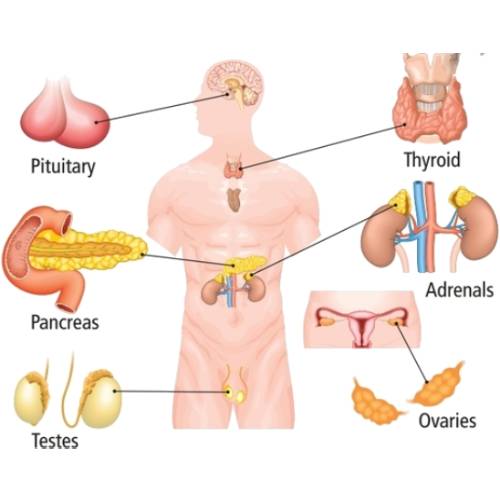 0 (https://creativecommons.org/licenses/by-sa/4.0/deed.en) license.
0 (https://creativecommons.org/licenses/by-sa/4.0/deed.en) license.
References
Animated Biomedical Productions. (2013, January 30). 3D Medical animation – Peristalsis in large intestine/bowel || ©ABP. YouTube. https://www.youtube.com/watch?v=Ujr0UAbyPS4&feature=youtu.be
Bozeman Science. (2012, January 9). Fight or flight response. YouTube. https://www.youtube.com/watch?v=m2GywoS77qc&feature=youtu.be
Henk van ‘t Klooster. (2013). Adrenaline: Fight or flight response. YouTube. https://www.youtube.com/watch?v=FBnBTkcr6No&t=4s
Mayo Clinic Staff. (n.d.). Type 1 diabetes. MayoClinic.org. https://www.mayoclinic.org/diseases-conditions/type-1-diabetes/symptoms-causes/syc-20353011
Wikipedia contributors. (2020, July 22). Thyroid-stimulating hormone. In Wikipedia. https://en.wikipedia.org/w/index.php?title=Thyroid-stimulating_hormone&oldid=968942540
Endocrine System – Johns Hopkins All Children’s Hospital
- Endocrine glands release
hormones
into the bloodstream. This lets the hormones travel to cells in other parts of the body. - The endocrine hormones help control mood, growth and development, the way our organs work,
metabolism
, and reproduction. - The endocrine system regulates how much of each hormone is released. This can depend on levels of hormones already in the blood, or on levels of other substances in the blood, like calcium. Many things affect hormone levels, such as stress, infection, and changes in the balance of fluid and minerals in blood.
- hypothalamus
- pituitary
- thyroid
- parathyroids
- adrenals
- pineal body
- the ovaries
- the testes
- growth hormone, which stimulates the growth of bone and other body tissues and plays a role in the body’s handling of nutrients and minerals
- prolactin (pro-LAK-tin), which activates milk production in women who are breastfeeding
- thyrotropin (thy-ruh-TRO-pin), which stimulates the thyroid gland to make thyroid hormones
- corticotropin (kor-tih-ko-TRO-pin), which stimulates the adrenal gland to make certain hormones
- antidiuretic (an-ty-dy-uh-REH-tik) hormone, which helps control body water balance through its effect on the kidneys
- oxytocin (ahk-see-TOE-sin), which triggers the contractions of the uterus that happen during labor
What Is the Endocrine System?
The endocrine system is made up of glands that make hormones. Hormones are the body’s chemical messengers. They carry information and instructions from one set of cells to another.
Hormones are the body’s chemical messengers. They carry information and instructions from one set of cells to another.
The endocrine (EN-duh-krin) system influences almost every cell, organ, and function of our bodies.
What Does the Endocrine System Do?
Too much or too little of any hormone can harm the body. Medicines can treat many of these problems.
What Are the Parts of the Endocrine System?
While many parts of the body make hormones, the major glands that make up the endocrine system are the:
The pancreas is part of the endocrine system and the digestive system. That’s because it secretes hormones into the bloodstream, and makes and secretes enzymes into the digestive tract.
That’s because it secretes hormones into the bloodstream, and makes and secretes enzymes into the digestive tract.
Hypothalamus: The hypothalamus (hi-po-THAL-uh-mus) is in the lower central part of the brain. It links the endocrine system and nervous system. Nerve cells in the hypothalamus make chemicals that control the release of hormones secreted from the pituitary gland. The hypothalamus gathers information sensed by the brain (such as the surrounding temperature, light exposure, and feelings) and sends it to the pituitary. This information influences the hormones that the pituitary makes and releases.
Pituitary: The pituitary (puh-TOO-uh-ter-ee) gland is at the base of the brain, and is no bigger than a pea. Despite its small size, the pituitary is often called the “master gland.” The hormones it makes control many other endocrine glands.
The pituitary gland makes many hormones, such as:
The pituitary also secretes endorphins (en-DOR-fins), chemicals that act on the nervous system and reduce feelings of pain. The pituitary also secretes hormones that signal the reproductive organs to make sex hormones. The pituitary gland also controls
The pituitary also secretes hormones that signal the reproductive organs to make sex hormones. The pituitary gland also controls
ovulation
and the menstrual cycle in women.
Thyroid: The thyroid (THY-royd) is in the front part of the lower neck. It’s shaped like a bow tie or butterfly. It makes the thyroid hormones thyroxine (thy-RAHK-sin) and triiodothyronine (try-eye-oh-doe-THY-ruh-neen). These hormones control the rate at which cells burn fuels from food to make energy. The more thyroid hormone there is in the bloodstream, the faster chemical reactions happen in the body.
Thyroid hormones are important because they help kids’ and teens’ bones grow and develop, and they also play a role in the development of the brain and nervous system.
Parathyroids: Attached to the thyroid are four tiny glands that work together called the parathyroids (par-uh-THY-roydz). They release parathyroid hormone, which controls the level of calcium in the blood with the help of calcitonin (kal-suh-TOE-nin), which the thyroid makes.
Adrenal Glands: These two triangular adrenal (uh-DREE-nul) glands sit on top of each kidney. The adrenal glands have two parts, each of which makes a set of hormones and has a different function:
- The outer part is the adrenal cortex. It makes hormones called corticosteroids (kor-tih-ko-STER-oydz) that help control salt and water balance in the body, the body’s response to stress, metabolism, the immune system, and sexual development and function.
- The inner part is the adrenal medulla (muh-DUH-luh). It makes catecholamines (kah-tuh-KO-luh-meenz), such as epinephrine (eh-puh-NEH-frun). Also called adrenaline, epinephrine increases blood pressure and heart rate when the body is under stress.
Pineal: The pineal (pih-NEE-ul) body, also called the pineal gland, is in the middle of the brain. It secretes melatonin (meh-luh-TOE-nin), a hormone that may help regulate when we sleep at night and wake in the morning.
Reproductive Glands: The gonads are the main source of sex hormones. In boys the male gonads, or testes (TES-teez), are in the scrotum. They secrete hormones called androgens (AN-druh-junz), the most important of which is
testosterone
(tess-TOSS-tuh-rone). These hormones tell a boy’s body when it’s time to make the changes associated with puberty, like penis and height growth, deepening voice, and growth in facial and pubic hair. Working with hormones from the pituitary gland, testosterone also tells a boy’s body when it’s time to make sperm in the testes.
A girl’s gonads, the ovaries (OH-vuh-reez), are in her pelvis. They make eggs and secrete the female hormones
estrogen
(ESS-truh-jen) and
progesterone
(pro-JESS-tuh-rone). Estrogen is involved when a girl starts puberty. During puberty, a girl will have breast growth, start to accumulate body fat around the hips and thighs, and have a growth spurt. Estrogen and progesterone are also involved in the regulation of a girl’s menstrual cycle.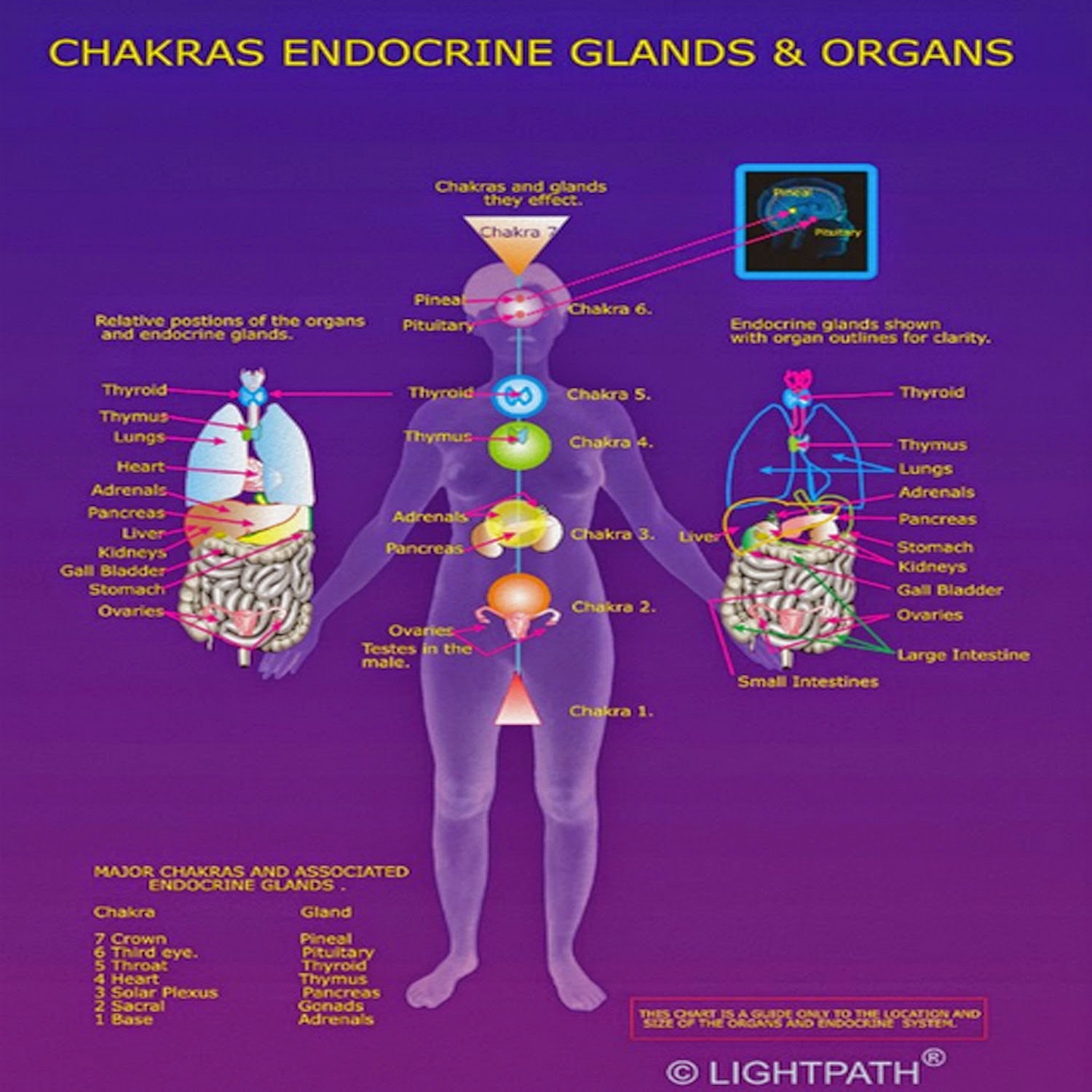 These hormones also play a role in pregnancy.
These hormones also play a role in pregnancy.
Pancreas: The pancreas (PAN-kree-us) makes insulin (IN-suh-lin) and glucagon (GLOO-kuh-gawn), which are hormones that control the level of glucose, or sugar, in the blood. Insulin helps keep the body supplied with stores of energy. The body uses this stored energy for exercise and activity, and it also helps organs work as they should.
What Can Help Keep the Endocrine System Healthy?
To help keep your child’s endocrine system healthy:
- Get plenty of exercise.
- Eat a nutritious diet.
- Go for regular medical checkups.
- Talk to the doctor before taking any supplements or herbal treatments.
- Let the doctor know about any family history of endocrine problems, such as diabetes or thyroid problems.
When Should I Call the Doctor?
Let the doctor know if your child:
- drinks a lot of water but is still thirsty
- has to pee often
- has frequent belly pain or nausea
- is very tired or weak
- is gaining or losing a lot of weight
- has tremors or sweats a lot
- is constipated
- isn’t growing or developing as expected
Note: All information is for educational purposes only. For specific medical advice, diagnoses, and treatment, consult your doctor.
For specific medical advice, diagnoses, and treatment, consult your doctor.
© 1995-2021 KidsHealth® All rights reserved. Images provided by iStock, Getty Images, Corbis, Veer, Science Photo Library, Science Source Images, Shutterstock, and Clipart.com
| Endocrine gland/ source of hormone | Hormone | Target organ or tissue | Major function is control of:- |
| Hypothalamus | Numerous releasing factors | Pituitary gland | Hormones release by pituitary |
| Anterior pituitary (adenohypophysis) | ACTH (adrenocorticotrophic hormone) | Adrenal cortex | Cortisol secretion |
| FSH (follicle stimulating hormone) | Ovaries / testes (tubules) | Ovarian follicle growth, oestrogen secretion / spermatogenesis | |
| LH (luteinizing hormone) | Ovaries / testes (Leydig cells) | Ovulation, luteinization of follicle / testosterone secretion | |
| GH (growth hormone) | All tissues | Growth; carbohydrate, protein and fat metabolism | |
| TSH (thyroid stimulating hormone) | Thyroid gland | Thyroxine secretion | |
| Prolactin | Mammary gland | Milk secretion (stimulates) | |
| Posterior pituitary (neurohypophysis) | ADH (antidiuretic hormone) | Kidney tubules Smooth muscle in arterioles | Water excretion Blood pressure |
| Oxytocin | Uterine smooth muscle Mammary gland | Uterine contractions Milk let-down | |
| Pineal gland | Melatonin | Various tissues | Circadian rhythm; reproduction |
| Thyroid | Thyroxine (T4) Triiodothyronine (T3) | Most tissues | Metabolic rate; growth and development |
| Calcitonin | Bone | Plasma calcium and phosphate (lowers) | |
| Parathyroids | PTH (parathyroid hormone) | Bone, kidneys, intestine | Plasma calcium and phosphate (elevates) |
| Thymus (regresses in adulthood) | Thymopoetin | T-lymphocyte cells in blood | Immune responses |
| Pancreas (islet cells) | Insulin (from beta cells) | Most tissues, notably muscle and liver | Glucose utilization; blood glucose (lowers) |
| Glucagon (from alpha cells) | Primarily liver | Blood glucose (elevates) | |
| Intestinal mucosa | Gastrin | Stomach | Acid secretion |
| Secretin | Pancreas | Digestive secretions | |
| Cholecystokinin | Gallbladder | Release of bile | |
| Somatostatin | Intestine | Acid and intestinal secretions (inhibits) | |
| Adrenal medulla | Adrenaline Noradrenaline | All tissues | Metabolism; heart rate and output; response to stress and exercise |
| Adrenal cortex | Cortisol Corticosterone | All tissues | Metabolism; response to stress and exercise |
| Aldosterone | Primarily kidneys | Sodium, potassium and pH balance | |
| Kidneys | Renin (converted to Angiotensin-II) | Blood vessel smooth muscle Adrenal cortex | Blood pressure Aldosterone secretion |
| Ovaries | Oestrogens | Reproductive organs | Reproductive development; also has effects on oestrus behaviour |
| Progesterone (from corpus luteum) | Uterus | Uterine condition | |
| Uterus | Prostaglandin (PGF2?) | Corpus luteum | Breakdown of corpus luteum (luteolysis) |
| Placenta (in pregnant mare) | Progesterone and oestrogens | Corpus luteum | Maintenance of pregnancy |
| eCG (Equine chorionic gonadotrophin, PMSG) | Ovaries | Maintenance of pregnancy | |
| Relaxin | Uterus Cervix, pelvic ligaments | Uterine contraction (inhibits) Increase in distensibility | |
| Testes | Testosterone | Reproductive organs | Reproductive development; also has effects on behaviour |
The human endocrine cells – The Human Protein Atlas
The human body has a slow and a fast type of systemic signaling system: the endocrine and the nervous system, respectively.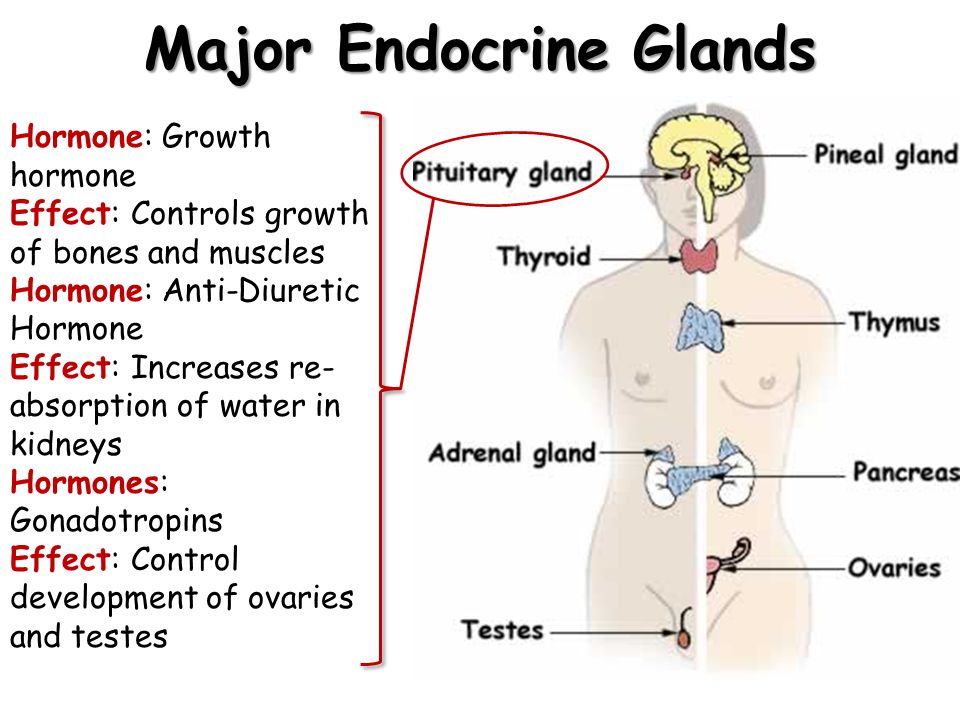 The endocrine system communicates through the production and secretion of messenger biomolecules, called hormones, using the cardiovascular system. The cells in charge of the production and secretion of hormones are called endocrine cells and are distributed in many parts of the body in the form of major endocrine organs, such as the adrenal gland and thyroid gland, or organ-associated cells distributed throughout the human body, in for example the brain and the digestive system. Hormones regulate numerous functions of the body, including digestion, reproduction and fight-and-flight response. Transcriptome analysis shows that 75% (n=14743) of all human proteins (n=19670) are detected in endocrine cells and 1289 of these genes show an elevated expression in any endocrine cells compared to other cell type groups.
The endocrine system communicates through the production and secretion of messenger biomolecules, called hormones, using the cardiovascular system. The cells in charge of the production and secretion of hormones are called endocrine cells and are distributed in many parts of the body in the form of major endocrine organs, such as the adrenal gland and thyroid gland, or organ-associated cells distributed throughout the human body, in for example the brain and the digestive system. Hormones regulate numerous functions of the body, including digestion, reproduction and fight-and-flight response. Transcriptome analysis shows that 75% (n=14743) of all human proteins (n=19670) are detected in endocrine cells and 1289 of these genes show an elevated expression in any endocrine cells compared to other cell type groups.
- 1289 elevated genes
- 71 enriched genes
- 246 group enriched genes
- Main function: Hormone production
The endocrine cell transcriptome
The scRNA-seq-based endocrine cell transcriptome can be analyzed with regard to specificity, illustrating the number of genes with elevated expression in each specific endocrine cell type compared to other cell types (Table 1).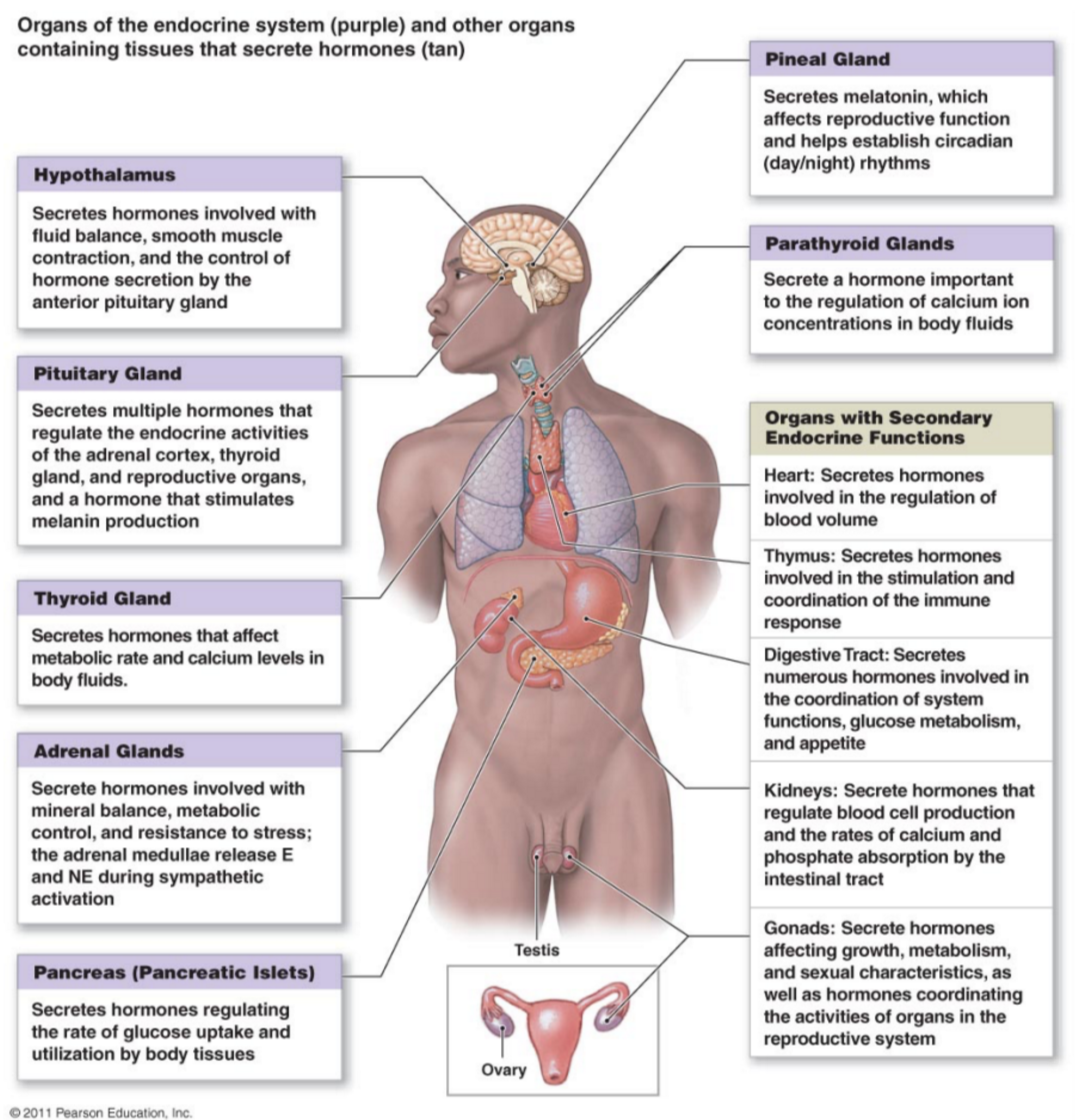 Genes with an elevated expression are divided into three subcategories:
Genes with an elevated expression are divided into three subcategories:
- Cell type enriched: At least four-fold higher mRNA level in a certain cell type compared to any other cell type.
- Group enriched: At least four-fold higher average mRNA level in a group of 2-10 cell types compared to any other cell type.
- Cell type enhanced: At least four-fold higher mRNA level in a cell certain cell type compared to the average level in all other cell types.
Table 1. Number of genes in the subdivided specificity categories of elevated expression in the analyzed endocrine cell types.
Protein expression of genes elevated in endocrine cells
In-depth analysis of the elevated genes in endocrine cells using scRNA-seq and antibody-based protein profiling allowed us to visualize the expression patterns of these proteins in different types of endocrine cells: pancreatic endocrine cells, intestinal endocrine cells and Leydig cells in testis.
Pancreatic endocrine cells
As shown in Table 1, 403 genes are elevated in pancreatic endocrine cells compared to other cell types. The pancreatic endocrine cells found in islets of Langerhans constitute 2% of the pancreas, and are responsible for maintaining a steady blood glucose level by secreting hormones regulating uptake and release of glucose. Examples of proteins expressed in pancreatic endocrine cells include insulin (INS), which is secreted following elevated blood glucose levels and stimulates glucose uptake upon binding insulin receptors, and islet amyloid polypeptide (IAPP), a hormone that regulates glucose metabolism and acts as a satiation signal.
INS – pancreas
INS – pancreas
INS – pancreas
IAPP – pancreas
IAPP – pancreas
IAPP – pancreas
Intestinal endocrine cells
As shown in Table 1, 445 genes are elevated in intestinal endocrine cells compared to other cell types. Intestinal endocrine cells are spread out in the epithelium of the intestines, including the colon and rectum. These cells secrete to the blood numerous hormones (proteins) that in other organs regulate digestive functions such as the release of digestive enzymes and blood sugar balance. An example is peptide YY (PYY), which inhibits secretion of digestive enzymes from the pancreas and peristaltic movements in the jejunum and colon. Another important protein is chromogranin A (CHGA), a precursor for several hormones necessary for maintaining balance in e.g. insulin production in the pancreas and adrenaline release in the adrenal gland. CHGA is produced by endocrine cells in several tissues, but its expression is elevated in intestinal endocrine cells.
Intestinal endocrine cells are spread out in the epithelium of the intestines, including the colon and rectum. These cells secrete to the blood numerous hormones (proteins) that in other organs regulate digestive functions such as the release of digestive enzymes and blood sugar balance. An example is peptide YY (PYY), which inhibits secretion of digestive enzymes from the pancreas and peristaltic movements in the jejunum and colon. Another important protein is chromogranin A (CHGA), a precursor for several hormones necessary for maintaining balance in e.g. insulin production in the pancreas and adrenaline release in the adrenal gland. CHGA is produced by endocrine cells in several tissues, but its expression is elevated in intestinal endocrine cells.
PYY – rectum
PYY – rectum
PYY – rectum
CHGA – colon
CHGA – colon
CHGA – colon
Leydig cells – testis
As shown in Table 1, 466 genes are elevated in Leydig cells compared to other cell types. Leydig cells are hormone-producing endocrine cells that are located outside the seminiferous ducts in the testis. The interactions between Leydig cells, Sertoli cells and germinal cells are essential, both for the development of testis and the progress of spermatogenesis. Of the highly enriched genes in testis, only a few are specifically expressed in Leydig cells. Examples of proteins with elevated expression in Leydig cells include the enzyme steroidogenic acute regulatory protein (STAR), that plays a key role in the acute regulation of steroid hormone synthesis by enhancing the conversion of cholesterol into pregnenolone, and insulin-like 3 (INSL3), suggested to act as a hormone involved in the development of the urogenital tract and intra-abdominal testicular descent.
Leydig cells are hormone-producing endocrine cells that are located outside the seminiferous ducts in the testis. The interactions between Leydig cells, Sertoli cells and germinal cells are essential, both for the development of testis and the progress of spermatogenesis. Of the highly enriched genes in testis, only a few are specifically expressed in Leydig cells. Examples of proteins with elevated expression in Leydig cells include the enzyme steroidogenic acute regulatory protein (STAR), that plays a key role in the acute regulation of steroid hormone synthesis by enhancing the conversion of cholesterol into pregnenolone, and insulin-like 3 (INSL3), suggested to act as a hormone involved in the development of the urogenital tract and intra-abdominal testicular descent.
STAR – testis
STAR – testis
STAR – testis
INSL3 – testis
INSL3 – testis
INSL3 – testis
Other endocrine cells
Endocrine cells are also found in various other hormone-producing organs in the body, including the pituitary gland, adrenal gland, thyroid gland and female ovaries.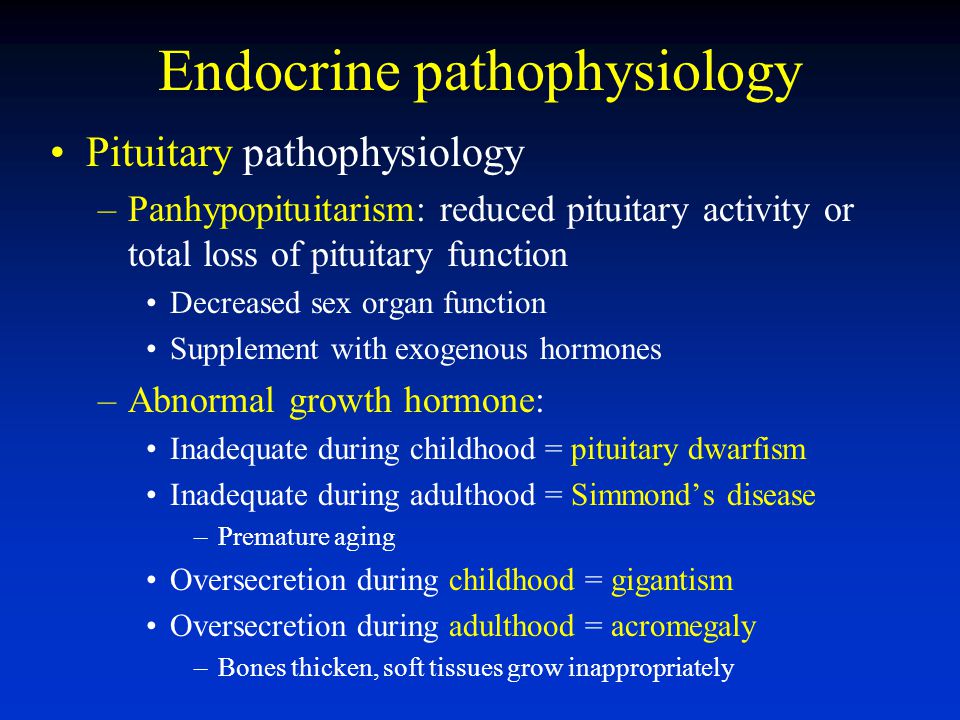 The pituitary gland, at the base of the brain, is referred to as the master endocrine gland since it regulates most other endocrine organs in the body. The anterior part consists mainly of hormone-producing epithelial cells (somatotropes, corticotrophs, thyrotropes, gonadotropes and lactotropes) that store hormones in secretory granules, to later be released into the bloodstream and facilitates further downstream effects in peripheral tissues, including thyroid stimulating hormone (TSHB), produced in thyrotropes, follicle-stimulating hormone (FSHB) and luteinizing hormone (LHB), produced in gonadotropes and important regulators of the reproductive system.
The pituitary gland, at the base of the brain, is referred to as the master endocrine gland since it regulates most other endocrine organs in the body. The anterior part consists mainly of hormone-producing epithelial cells (somatotropes, corticotrophs, thyrotropes, gonadotropes and lactotropes) that store hormones in secretory granules, to later be released into the bloodstream and facilitates further downstream effects in peripheral tissues, including thyroid stimulating hormone (TSHB), produced in thyrotropes, follicle-stimulating hormone (FSHB) and luteinizing hormone (LHB), produced in gonadotropes and important regulators of the reproductive system.
TSHB – pituitary gland
FSHB – pituitary gland
LHB – pituitary gland
The adrenal gland is commonly associated with the fight-and-flight stress response by the endocrine production and release of catecholamines noradrenaline and adrenaline in the adrenal medulla. Several proteins are linked to this process, including dopamine beta-hydroxylase (DBH), an enzyme expressed in the medulla of the adrenal gland. The endocrine cells of the thyroid gland are important for the regulation of metabolic rate. They produce the thyroid hormones thyroxine (T4), which is converted to another important hormone triiodothyronine (T3) through the action of enzyme iodotyrosine deiodinase (IYD). Four tiny parathyroid glands are positioned behind the thyroid gland, whose endocrine cells play an important role in the regulation of calcium homeostasis by producing and releasing parathyroid hormone (PTH). The ovaries produce and release mature oocytes and produce hormones needed for female reproduction. Inhibin alpha subunit (INHA) is produced in the ovaries and testis and inhibits the release of follicle stimulating hormone (FSH) from the pituitary gland, and is in this way a negative feedback signal important for hormone level regulation.
Several proteins are linked to this process, including dopamine beta-hydroxylase (DBH), an enzyme expressed in the medulla of the adrenal gland. The endocrine cells of the thyroid gland are important for the regulation of metabolic rate. They produce the thyroid hormones thyroxine (T4), which is converted to another important hormone triiodothyronine (T3) through the action of enzyme iodotyrosine deiodinase (IYD). Four tiny parathyroid glands are positioned behind the thyroid gland, whose endocrine cells play an important role in the regulation of calcium homeostasis by producing and releasing parathyroid hormone (PTH). The ovaries produce and release mature oocytes and produce hormones needed for female reproduction. Inhibin alpha subunit (INHA) is produced in the ovaries and testis and inhibits the release of follicle stimulating hormone (FSH) from the pituitary gland, and is in this way a negative feedback signal important for hormone level regulation.
DBH – adrenal gland
IYD – thyroid gland
PTH – parathyroid gland
INHA – ovary (primary follicle)
Endocrine cells are characterized by the secretion of various hormones (signaling molecules) to the blood. These hormones are usually transported from their production site to other organs where they regulate numerous functions of the body, including digestion, reproduction, fight-and-flight response, metabolism, sleep and psychological states. Hormone production is dynamic and feedback loops strictly regulate the amount of hormones depending on numerous factors e.g. circadian clock, age, menstrual cycle and pregnancy.
Hormone production in endocrine cells is stimulated mainly by endocrine signaling or neuroendocrine signaling, depending on the characteristics of the target endocrine cell. During endocrine signaling, hormones produced by other endocrine cells bind to receptors on the surface of the target endocrine cells and set off an intracellular signaling cascade that results in the production and secretion of the appropriate hormone. An example of this is the so called hypothalamus – pituitary – gonadal axis, which involves the release of gonadotropin-releasing hormone (GnRH) from the hypothalamus, which bind to gonadotropic cells in the anterior part of the pituitary gland. In response, gonadotropic cells release follicle-stimulating hormone (FSH) and luteinizing hormone (LH) which control gonadal function in reproductive organs.
An example of this is the so called hypothalamus – pituitary – gonadal axis, which involves the release of gonadotropin-releasing hormone (GnRH) from the hypothalamus, which bind to gonadotropic cells in the anterior part of the pituitary gland. In response, gonadotropic cells release follicle-stimulating hormone (FSH) and luteinizing hormone (LH) which control gonadal function in reproductive organs.
Neuroendocrine signaling is restricted to neuroendocrine cells since they share characteristics of both neuronal and endocrine cells. They produce hormones in response to nervous stimuli (changes in membrane potential). Examples are intestinal endocrine cells, cells in the adrenal medulla and pancreatic endocrine cells.
The histology of organs that contain endocrine cells, including interactive images, is described in the Protein Atlas Histology Dictionary.
Here, the protein-coding genes expressed in endocrine cells are described and characterized, together with examples of immunohistochemically stained tissue sections that visualize corresponding protein expression patterns of genes with elevated expression in different endocrine cell types.
The transcript profiling was based on publicly available genome-wide expression data from scRNA-seq experiments covering 13 different normal tissues, as well as analysis of human peripheral blood mononuclear cells (PBMCs). All datasets (unfiltered read counts of cells) were clustered separately using louvain clustering and the clusters obtained were gathered at the end, resulting in a total of 192 different cell type clusters. The clusters were then manually annotated based on a survey of known tissue and cell type-specific markers. The scRNA-seq data from each cluster of cells was aggregated to average normalized protein-coding transcripts per million (pTPM) and the normalized expression value (nTPM) across all protein-coding genes. A specificity and distribution classification was performed to determine the number of genes elevated in these single cell types, and the number of genes detected in one, several or all cell types, respectively.
It should be noted that since the analysis was limited to datasets from 13 organs only, not all human cell types are represented.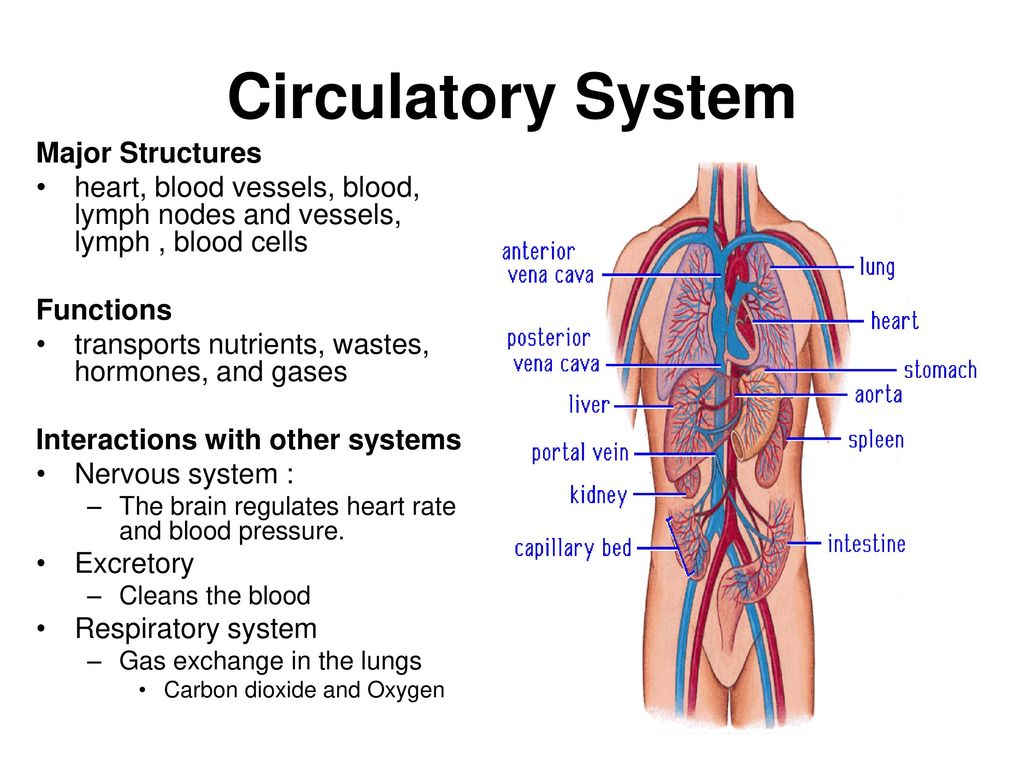 Furthermore, some cell types are present only in low amounts, or identified only in mixed cell clusters, which may affect the results and bias the cell type specificity.
Furthermore, some cell types are present only in low amounts, or identified only in mixed cell clusters, which may affect the results and bias the cell type specificity.
Uhlén M et al., Tissue-based map of the human proteome. Science (2015)
PubMed: 25613900 DOI: 10.1126/science.1260419
Fagerberg L et al., Analysis of the human tissue-specific expression by genome-wide integration of transcriptomics and antibody-based proteomics. Mol Cell Proteomics. (2014)
PubMed: 24309898 DOI: 10.1074/mcp.M113.035600
Guo J et al., The adult human testis transcriptional cell atlas. Cell Res. (2018)
PubMed: 30315278 DOI: 10.1038/s41422-018-0099-2
Parikh K et al., Colonic epithelial cell diversity in health and inflammatory bowel disease. Nature. (2019)
PubMed: 30814735 DOI: 10.1038/s41586-019-0992-y
Qadir MMF et al., Single-cell resolution analysis of the human pancreatic ductal progenitor cell niche. Proc Natl Acad Sci U S A. (2020)
PubMed: 32354994 DOI: 10. 1073/pnas.1918314117
1073/pnas.1918314117
Wang Y et al., Single-cell transcriptome analysis reveals differential nutrient absorption functions in human intestine. J Exp Med. (2020)
PubMed: 31753849 DOI: 10.1084/jem.20191130
90,000 An important UN report examines the effects of human exposure to hormone-disrupting chemicals
\ n
According to a new report by the United Nations Environment Program (UNEP) and the World Health Organization (WHO), “State of the Science of Endocrine Disrupting Chemicals”, many Synthetic chemicals that have not been studied as harmful to the hormonal system can have significant health effects.
\ n \ n
\ n
“More research is urgently needed to gain a better understanding of the health and environmental impact of endocrine disruptors.”
\ n
\ nDr. Maria Neira, Director, WHO Department of Public Health and Environment \ n
\ n
\ n
\ nThe joint study calls for more research to better understand the links system (EDC), which are found in many household chemicals and industrial products, and certain diseases and disorders.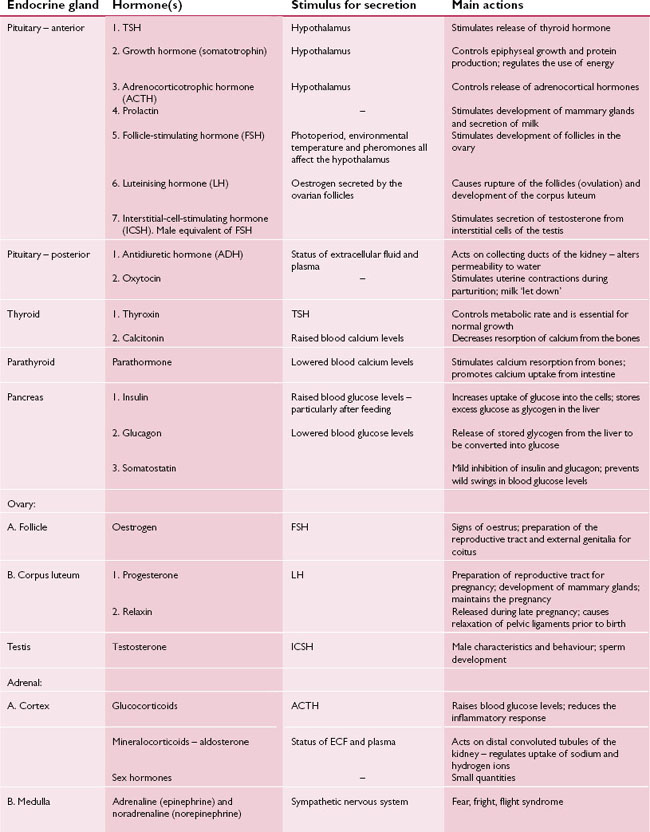 The report notes that more comprehensive assessments and better testing methods will reduce potential disease risks and save significant public health costs.
The report notes that more comprehensive assessments and better testing methods will reduce potential disease risks and save significant public health costs.
\ n
Certain substances can alter the function of the hormonal system
\ n
\ nHuman health depends on a well-functioning endocrine system that regulates the release of certain hormones that are essential for functions such as metabolism, growth and development, sleep and mood.Certain substances known as endocrine disruptors can alter the function / function of the hormonal system, increasing the risk of adverse health effects. Some EDCs occur naturally, while synthetic varieties can be found in pesticides, electronic devices, personal care products, and cosmetics. They can also be found as additives or contaminants in foods.
\ n
\ nThis UN study, the most comprehensive report on EDCs to date, highlights some of the links between EDC exposure and health problems, including the potential effects of such chemicals on undescended testicles in boys, breast cancer in women, prostate cancer in men, neurodevelopmental effects in boys, attention deficit / hyperactivity disorder in children, and thyroid cancer.
\ n
Various routes of human exposure
\ n
\ nHVRES can enter the environment, mainly from industrial and municipal waste, agricultural waste and during the incineration and disposal of garbage. A person can be exposed through the consumption of food, dust and water, inhalation of gases and the smallest particles in the air, and if these substances come into contact with the skin.
\ n
\ n “Chemicals are increasingly used in modern life and are an important part of the national economies of many countries, but the mismanagement of chemicals threatens the achievement of key development goals and sustainable development for all,” said Deputy General UN Secretary-General and UNEP Executive Director Achim Steiner.
\ n
\ n “Investing in new testing methods and research can help to better understand the costs of EDC exposure and reduce risks, while helping to maximize the benefits and offering smarter options and alternatives consistent with the transition to green economy, ”added Mr.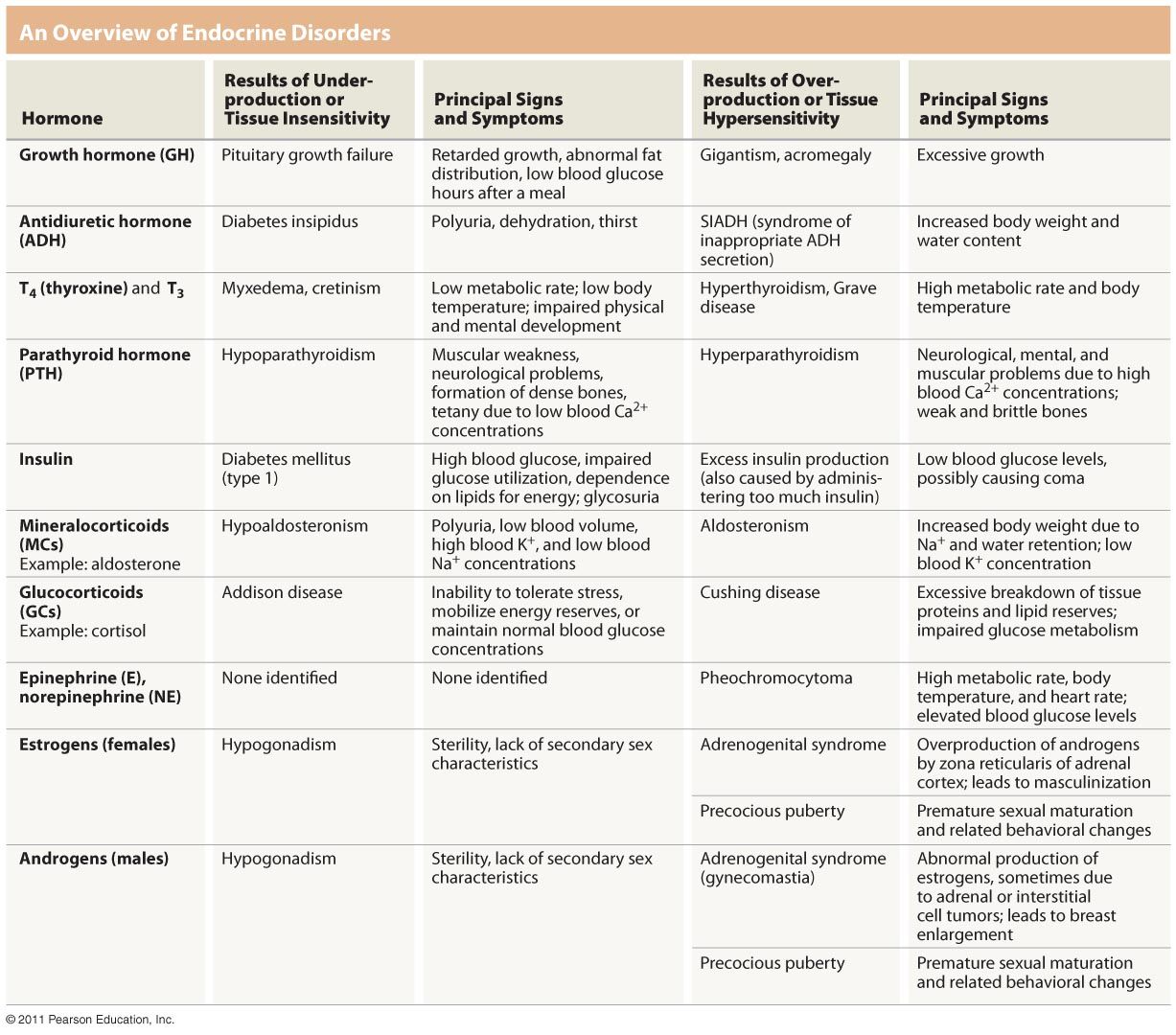 Steiner.
Steiner.
\ n
More Research Needed
\ n
\ nIn addition to exposure to chemicals, other environmental and nongenetic factors such as age and nutrition may be responsible for the observed increase in the number of diseases and disorders.But because of the large gaps in knowledge, it is extremely difficult to determine the exact causes and consequences.
\ n
\ n “More research is urgently needed to gain a better understanding of the health and environmental impact of endocrine disruptors,” said Dr. Maria Neira, Director of Public Health and the Environment, WHO. – Recent scientific evidence shows that communities around the world are exposed to EDCs and their associated risks.WHO will work with partners to prioritize research to explore the links between EDCs and health effects in order to mitigate risks. The responsibility to protect future generations lies with all of us. ”
\ n
\ nThe report also notes that similar concerns are raised by the impact of EDCs on wildlife.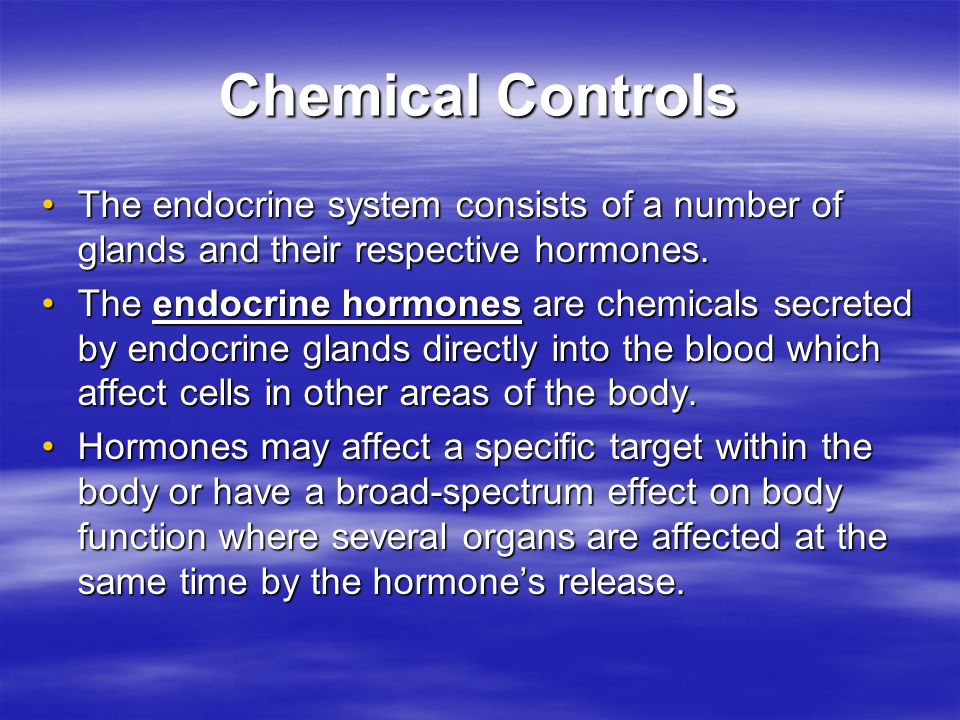 In Alaska in the United States of America, exposure to such chemicals in some deer populations can lead to reproductive harm, infertility and deformation of the horns.The declining populations of otters and sea lions may also be due in part to their exposure to various PCB compounds, the insecticide DDT, other persistent organic pollutants, and metals such as mercury. At the same time, bans and restrictions on the use of EDCs are associated with the restoration of populations of wild animals and a decrease in health problems.
In Alaska in the United States of America, exposure to such chemicals in some deer populations can lead to reproductive harm, infertility and deformation of the horns.The declining populations of otters and sea lions may also be due in part to their exposure to various PCB compounds, the insecticide DDT, other persistent organic pollutants, and metals such as mercury. At the same time, bans and restrictions on the use of EDCs are associated with the restoration of populations of wild animals and a decrease in health problems.
\ n
Recommendations
\ n
\ nThe study provides a number of recommendations for improving global knowledge of these chemicals, reducing the potential risks of disease and reducing the associated costs.These guidelines include the following:
\ n
- \ n
- Testing: Known EDCs are just the tip of the iceberg and deeper testing is needed to identify other possible endocrine disruptors, their sources and routes of exposure.
- Research: More scientific evidence is needed to determine the effects of the increasingly significant exposure to ECDE mixtures (mainly from waste products) on humans and wildlife.

- Reporting: Many sources of EDCs are unknown due to insufficient reporting and information on chemicals contained in products, materials and goods.
- Collaboration: Enhancing data sharing between scientists and between countries can help fill data gaps, mainly in developing and emerging economies.
\ n
\ n
\ n
\ n
\ n
\ n “Over the past ten years, great advances have been made in scientific research, showing that endocrine disorders are much more common and more complex than it was thought a decade ago,” said Ake Bergman, professor Stockholm University and editor-in-chief of the report.“As science develops further, it is necessary to ensure both the management of endocrine disrupting chemicals and further research into the effects and consequences of these chemicals on wildlife and humans.”
\ n
For more information please contact:
\ n
\ nNick Nuttall
\ nPress Secretary and Director of Communications UNEP
\ nTel .: +41 79 596 5737 / +254 733 632 755
\ n mail: nick. [email protected]
[email protected]
\ n
\ nGlenn Thomas
\ nLiaison Officer, Communications Department, WHO,
\ nTel: +41 22 791 3983
\ nMobile: +41 79 509 0677
\ n mail: [email protected]
\ n
\ nNada Osseiran
\ nLiaison Officer, Public Health & Environment
\ nTel: +41 22 791 4475
\ nMobile: +41 79 445 1624
\ n mail: [email protected]
\ n
“,” datePublished “:” 2013-02-19T00: 00: 00.0000000 + 00: 00 “,” image “:” https: // www.who.int/images/default-source/imported/chemical-safety.jpg?sfvrsn=851f4243_2″,”publisher”:▪”@type”:”Organization”,”name”:”World Health Organization: WHO “,” logo “: {” @type “:” ImageObject “,” url “:” https://www.who.int/Images/SchemaOrg/schemaOrgLogo.jpg “,” width “: 250,” height “: 60}} , “dateModified”: “2013-02-19T00: 00: 00.0000000 + 00: 00”, “mainEntityOfPage”: “https://www.who.int/ru/news/item/19-02-2013-effects- of-human-exposure-to-hormone-disrupting-chemicals-examined-in-landmark-un-report “,” @context “:” http: // schema. org “,” @ type “:” NewsArticle “};
org “,” @ type “:” NewsArticle “};
Hypothyroidism in children, description, symptoms and treatment
How does hypothyroidism develop in children?
The thyroid gland is a tiny in size, but huge in importance part of the endocrine system. It is located on the front of the neck in front of the larynx. The hormones produced by the thyroid gland coordinate the body’s metabolism, is responsible for its growth and development. Deviations in the work of this organ can lead to dysfunctions of the remaining endocrine glands.Currently, diseases of the thyroid gland lead in frequency among endocrine pathology in children and adolescents. If you do not diagnose them in time and do not start treatment, then the consequences can be irreversible. This article will focus on diseases of the thyroid gland in children associated with a decrease in its function – iodine deficiency and hypothyroidism.
In order to better understand what causes iodine deficiency and hypothyroidism in children, it is necessary to understand how the thyroid gland works.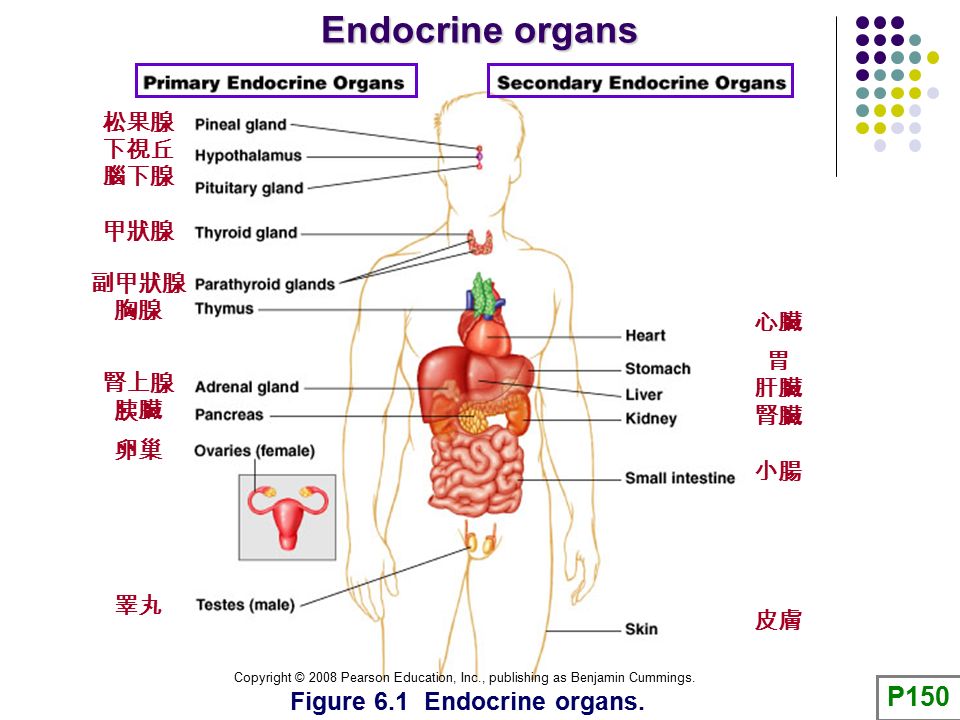
How does the thyroid gland work?
The thyroid gland has a lobular structure. In the center of the lobule there is a colloid, which is a viscous liquid. It is surrounded by a layer of follicular cells. Cells absorb amino acids and iodine from the blood, synthesize thyroglobulin. Iodinated thyroglobulin is stored in extracellular colloids. As needed, it enters the follicular cells, degrades to triiodothyronine (T3) and thyroxine (T4). These are active hormones that regulate the activity of almost all body tissues.The regulation of the thyroid gland is carried out by the pituitary gland with the help of thyroid-stimulating hormone (TSH).
Iodine deficiency state (iodine deficiency)
With insufficient intake of iodine in the body, a compensatory reaction develops: in order to absorb more iodine from the body in conditions of its deficiency, hypertrophy and hyperplasia of follicular epithelium cells occurs. Clinically, this is accompanied by the formation of a goiter (enlargement of the thyroid gland).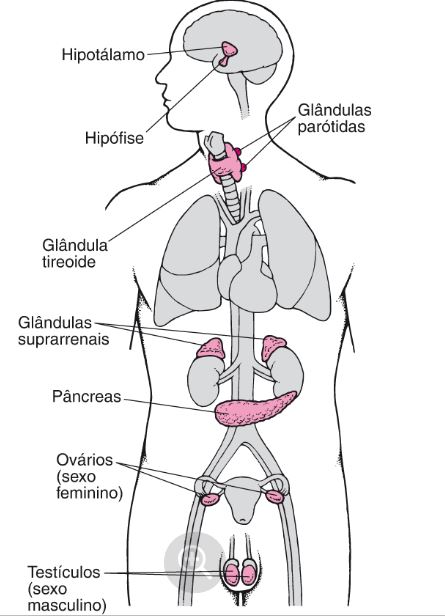 When the process is started, due to severe iodine deficiency, nodules can form in the thyroid gland.
When the process is started, due to severe iodine deficiency, nodules can form in the thyroid gland.
Currently, the problem of insufficient iodine consumption is relevant for all regions of Russia, including St. Petersburg and the Leningrad region. According to the Union of Pediatricians of Russia, in children who consulted a doctor for a thyroid disease within a year, iodine deficiency was found in 95% of cases! iodine (seafood, sea fish)
In our country, mass iodine prophylaxis is carried out by introducing iodized products – table salt, bread, vegetable oil, water. The use of iodized table salt is the most versatile method for the prevention of iodine deficiency. The choice of salt as a “carrier” of iodine is due to the fact that it is used by all strata of society, regardless of social and economic status.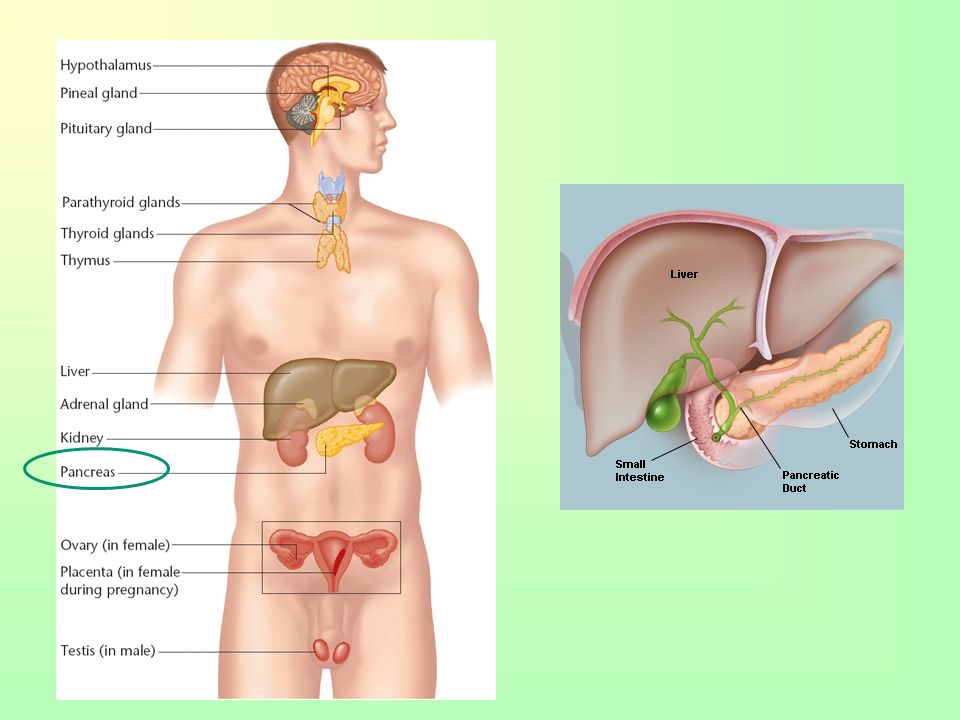 The use of only 5-10 mg of iodized table salt per day ensures a sufficient intake of iodine in the body.
The use of only 5-10 mg of iodized table salt per day ensures a sufficient intake of iodine in the body.
The World Health Organization has developed standards for iodine consumption for children of different ages and adults; in case of insufficient intake of iodine with food, potassium iodide salt is prescribed in tablet form.
If the child still develops iodine deficiency, then if untreated, hypothyroidism may become a complication of this condition.
Hypothyroidism in children
Hypothyroidism is a pathology in which the thyroid gland does not produce (or does not produce enough) hormones such as triiodothyronine and thyroxine.
Hypothyroidism in children is usually divided into congenital and acquired.
Congenital hypothyroidism
The causes of congenital hypothyroidism can be heredity, genetic mutations and malfunctions, disorders in the formation of the thyroid gland in the fetus (incorrect location of the organ or its absence), the presence of hypothyroidism in the mother during gestation, iodine deficiency during pregnancy, intrauterine damage and infections, etc.
In our country, all maternity hospitals are screening for congenital hypothyroidism – on the 4-5th day of life (and in premature babies at 7-14), blood is taken to determine the TSH level.Since the clinical manifestations of hypothyroidism become noticeable only after 3 months, early diagnosis and timely treatment started prevents severe mental retardation in children.
Acquired hypothyroidism
It can be primary and secondary.
The group of primary acquired hypothyroidism includes everything that is associated with damage to the thyroid gland itself (damage to the neck, removal of the thyroid gland during surgery, autoimmune disorders, iodine deficiency, ionizing radiation to the neck region, etc.).etc.).
Secondary hypothyroidism is associated with disruption of the hypothalamic-pituitary system and its interaction with the target organ – the thyroid gland (neuroinfections, traumatic brain injuries, brain tumors, etc.).
Symptoms of childhood hypothyroidism
Symptoms of hypothyroidism in infants, young and middle-aged children include:
- swelling of the face and body
- tendency to constipation
- hoarse low voice
- physical development retardation , sitting down, standing, rolling over and talking, untimely teething, delay in weight gain and growth in infants)
- lethargy, inactivity
emotional inhibition.
With a pronounced deficiency of thyroid hormones and with late treatment started, mental retardation is observed.
For older children and adolescents are characteristic:
- dry skin
- overweight to obesity
- slow growth
- delayed puberty
- melancholy
- depression
- drowsiness.
Girls have menstrual irregularities.
Diagnosis and treatment of hypothyroidism in children
Hypothyroidism is a serious threat to the life and health of a child, and the younger he is, the more dangerous the disease.
In diagnostics use determination of thyroid hormones , as well as imaging using ultrasound of the thyroid gland. According to the indications, additional research methods are prescribed.
An endocrinologist will help diagnose and cure childhood hypothyroidism.
Department of Genetics of Endocrine Diseases
Academic degree: Doctor of Medical Sciences.
Teaching disciplines:
- human cytogenetics
- Reproductive disorders
Education:
Higher. In 1999 he graduated from the pediatric faculty of the Chelyabinsk State Medical Academy, specialty: pediatrician. From 1999 to 2002 he completed postgraduate studies at the Federal State Budgetary Institution “MGNTs” RAMS, where, under the guidance of prof. L.F. Kurilo (head of the laboratory of genetics of reproductive disorders) and prof. A.V. Polyakova (head of the laboratory of DNA diagnostics). In 2002 he defended his Ph.D. thesis in the specialty “genetics”. In 2015 he defended his doctoral dissertation in the specialty “genetics”.
Further education and (or) professional retraining:
Valid Specialist Certificates:
- Laboratory genetics; 0377180846189 from 12.03.2019-12.03.2024.
- Genetics; 0377180734095 dated 03.13.2018-13.03.2023.
Professional development for the last 5 years:
- Modern achievements of medical genetics – 144 hours; certificate 180000685779 dated 07.02.2017
- Organization and conduct of scientific management at the university – 72 hours; certificate 772403394770 dated 02.26.2016
- Genetics – 144 hours; certificate 180001343784 dated 03/13/2018
- Laboratory genetics – 144 hours; certificate 180001689524 dated 03/12/2019
Experience:
Total work experience: 18 years.
Research interests:
Clinical genetics, cytogenetics and molecular genetics of sex chromosome anomalies, genetic control of sex differentiation and development of reproductive system organs, gametogenesis in humans, sex formation disorders and anomalies in the development of the reproductive system, hereditary diseases of the reproductive system, genetics of human reproductive disorders (infertility, miscarriage pregnancy, decreased fertility).
Author of over 300 scientific publications, including 75 scientific articles.
Additional information:
For achievements in the field of scientific research V.B. Chernykh was awarded prizes and awards: the Prize of the Foundation for the Promotion of Russian Medicine in the nomination “Biomedical Sciences”, 2004, a certificate of honor and the prize of the International Academic Publishing Company “Science / Interperiodica” for the best series of publications in the journal “Genetics”, 2006. , American Society of Andrology (ASA) Awards – 2011 and 2012 Member of the Russian Society of Medical Genetics (ROMG), the Association of Medical Geneticists, the Vavilov Society of Geneticists and Breeders (VOGiS), the European Society of Human Genetics (ESHG), the European Association of Cytogenetics (ECA), the Professional Association of Andrologists of Russia (PAAR) and the Russian Association of Human Reproduction ( RARCH).
Endocrine and gynecological diseases – safe treatment at the Gavrilova clinic in Samara
Patient D., 43 years old. Last year, weakness, drowsiness, depression, dryness of the skin began to disturb, abdominal pains appeared, menstruation became abundant with clots for up to 7-8 days.
The examination revealed for the first time CAIT, subclinical hypothyroidism (TSH increased to 9.5 at the upper normal limit of 3.9; TPO antibodies were higher than normal – 542).
Ultrasound of the pelvic organs revealed three myomatous nodes up to 4.0 cm, 1.8 cm and 1.2 cm in size.Estradiol in the blood is above the norm – 324 (norm 43.8-211.0).
Completed 2 courses of computer reflexology. The general condition has significantly improved: she became active, cheerful, there is no weakness and drowsiness, dry skin does not bother, menstruation has become less abundant, there are fewer clots. With ultrasound of the pelvic organs, only two nodes are determined, their sizes decreased to 2.6 cm and 1.1 cm.
TSH significantly decreased to 4.5, without the appointment of hormone replacement therapy. TPO antibodies dropped to 120.Estradiol is normal.
After 3 courses of computer reflexology, no complaints, monthly regular up to 5 days, no clots, abdominal pain does not bother. With ultrasound of the pelvic organs, two nodes with dimensions of 1.4 cm and 0.7 cm are determined. TSH is normal -2.9; TPO antibodies dreamed to normal, estradiol was normal.
Control examination in a year – no complaints, excellent mood, completely forgot about the spine, menstruation is normal, regular. TSH, antibodies, estradiol are normal. With ultrasound of the pelvic organs, only one node with a size of 0.8 cm is determined.
Patient T, 45 years old. Over the past 2 years, the nature of menstruation has changed, they have become more prolonged up to 7-10 days, abundant, with clots; began to worry about pain in the lower abdomen, severe general weakness and increased fatigue.
Examination (ultrasound of the pelvic organs) revealed: a myomatous node up to 6.4 cm in size is visualized on the front wall of the uterus, up to 2.6 cm on the back wall; the uterine cavity is deformed by 60%, endometrial hyperplasia is up to 2.1 cm (normally a maximum of 1.5 cm).Estradiol was increased to -354 (norm 43.8-211.0). Hemoglobin reduced to 85 g / l.
After 2 courses of treatment with computer reflexology, the patient’s condition improved: pain in the lower abdomen, general weakness, increased fatigue do not bother, menstruation began for 4-5 days, the volume of discharge is much less, without clots.

 This complex secretes several hormones that directly produce responses in target tissues, as well as hormones that regulate the synthesis and secretion of hormones of other glands. In addition, the hypothalamus–pituitary complex coordinates the messages of the endocrine and nervous systems.
This complex secretes several hormones that directly produce responses in target tissues, as well as hormones that regulate the synthesis and secretion of hormones of other glands. In addition, the hypothalamus–pituitary complex coordinates the messages of the endocrine and nervous systems.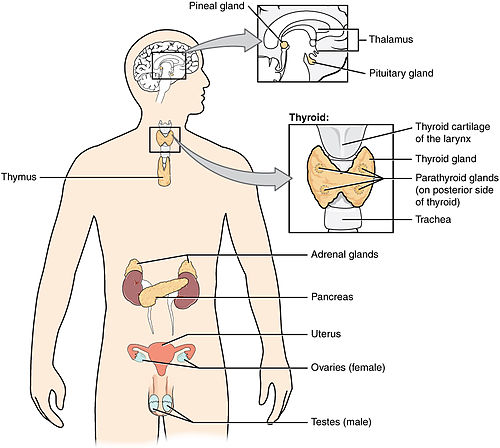 Most people have four parathyroid glands. The primary functional cells of the parathyroid glands are the chief cells that release parathyroid hormone to help maintain calcium homeostasis.
Most people have four parathyroid glands. The primary functional cells of the parathyroid glands are the chief cells that release parathyroid hormone to help maintain calcium homeostasis.
 Here, you will learn about the hormone-producing activities of the heart, gastrointestinal tract, kidneys, skeleton, adipose tissue, skin, and thymus.
Here, you will learn about the hormone-producing activities of the heart, gastrointestinal tract, kidneys, skeleton, adipose tissue, skin, and thymus.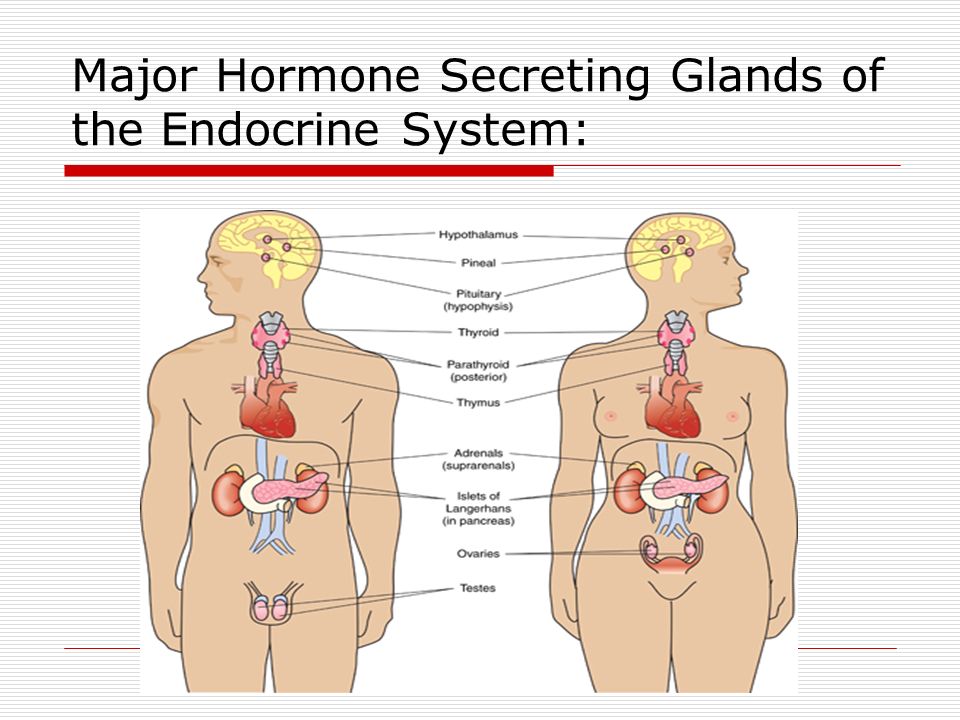 This communication is controlled by the autonomic nervous system and endocrine system. The autonomic nervous system controls involuntary body functions, such as heart rate and digestion. The endocrine system secretes hormones into the blood that travel to body cells and influence their activities.
This communication is controlled by the autonomic nervous system and endocrine system. The autonomic nervous system controls involuntary body functions, such as heart rate and digestion. The endocrine system secretes hormones into the blood that travel to body cells and influence their activities.
